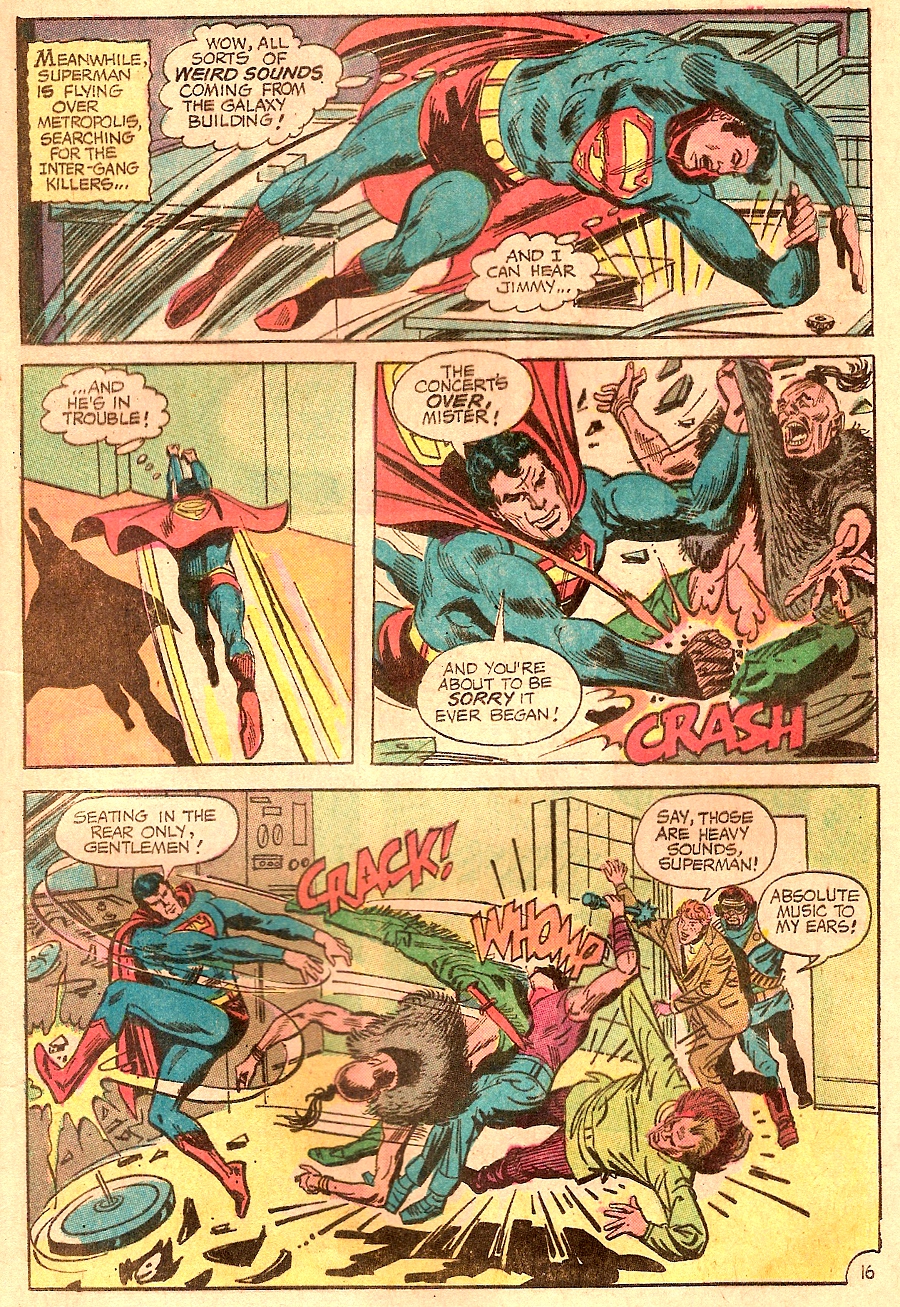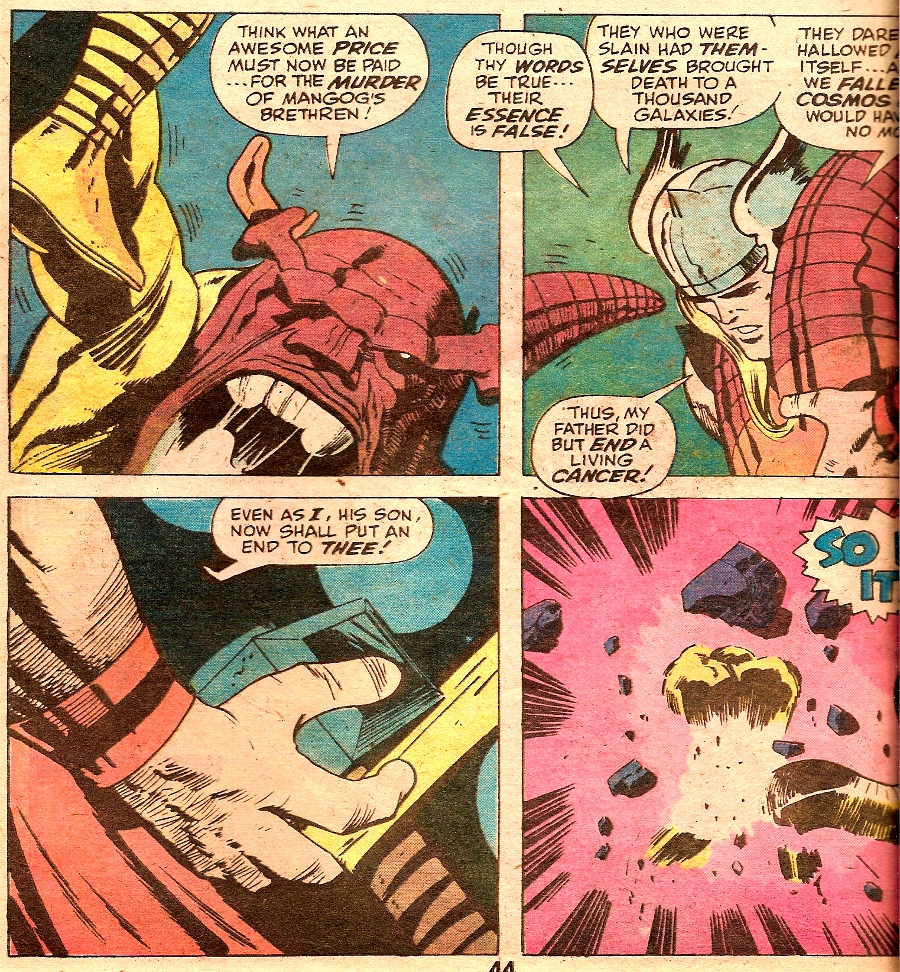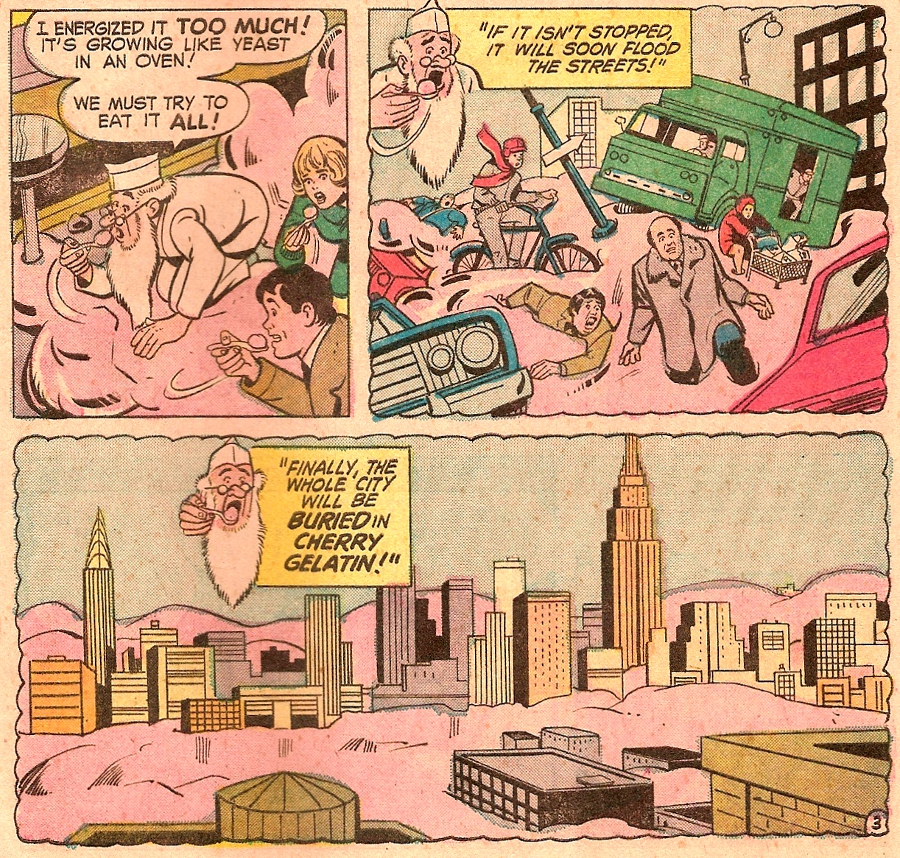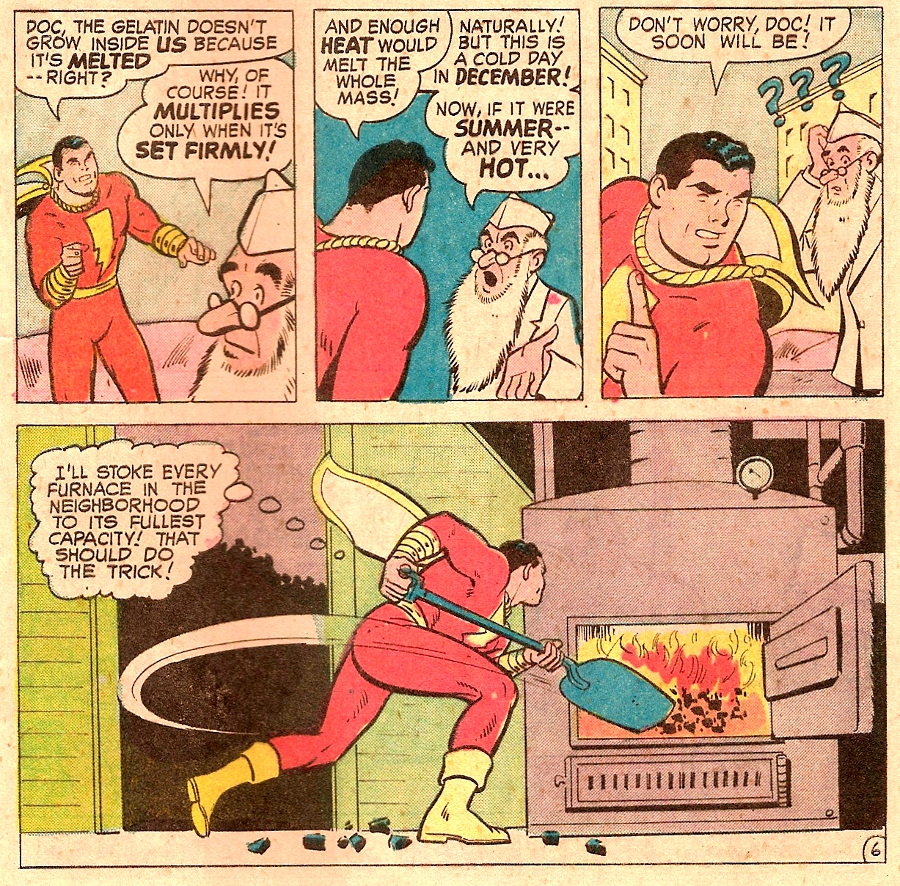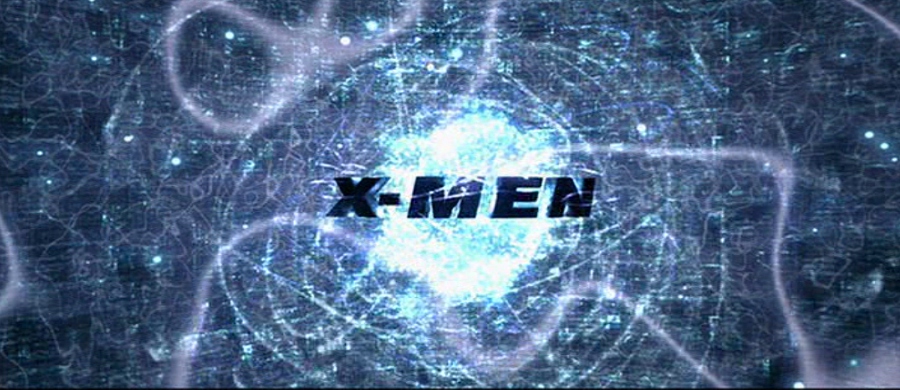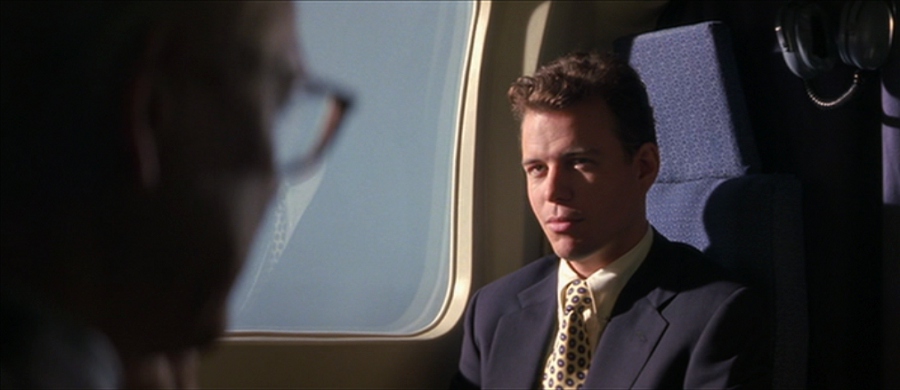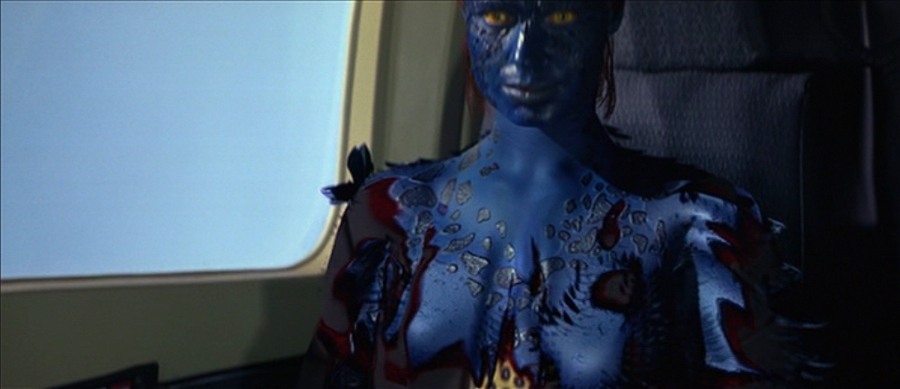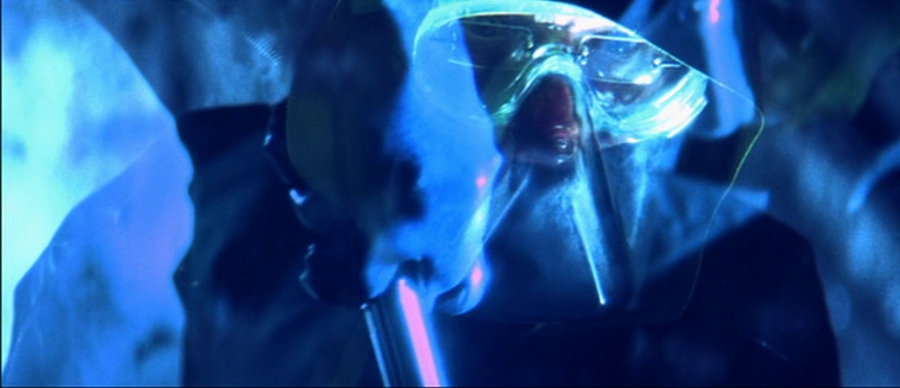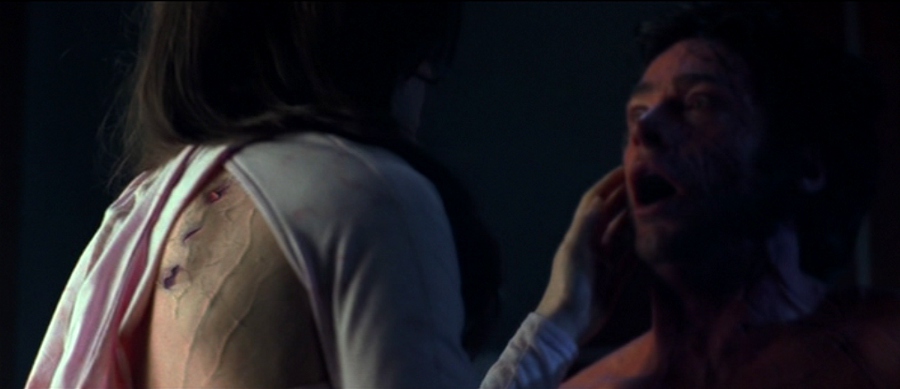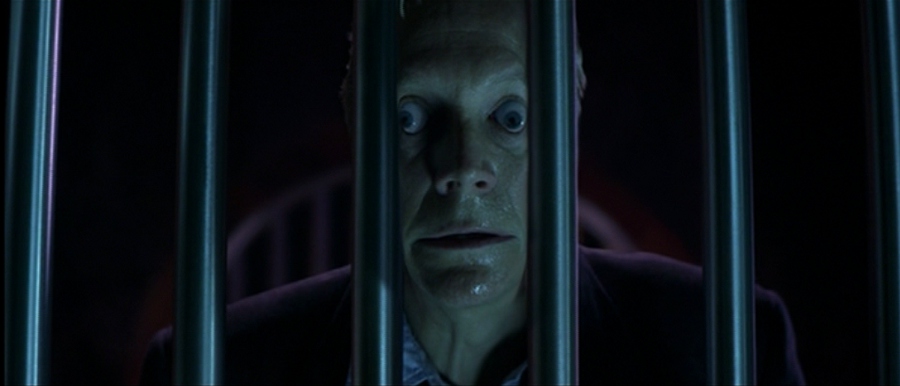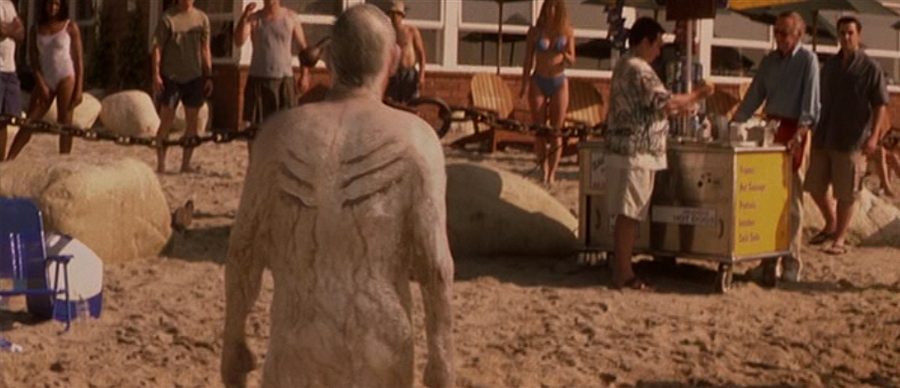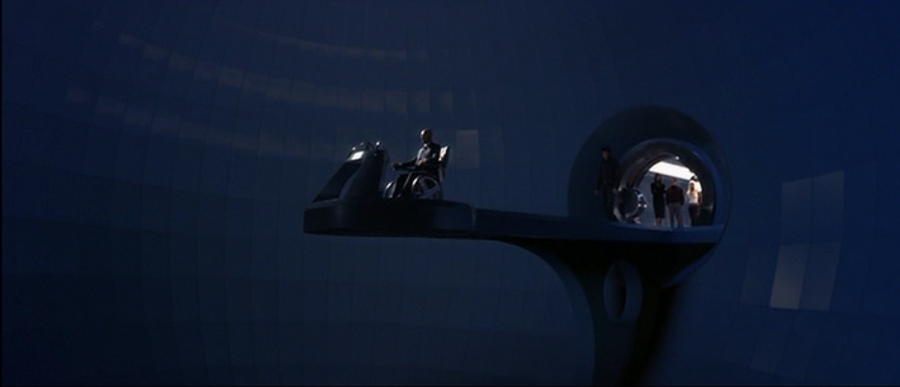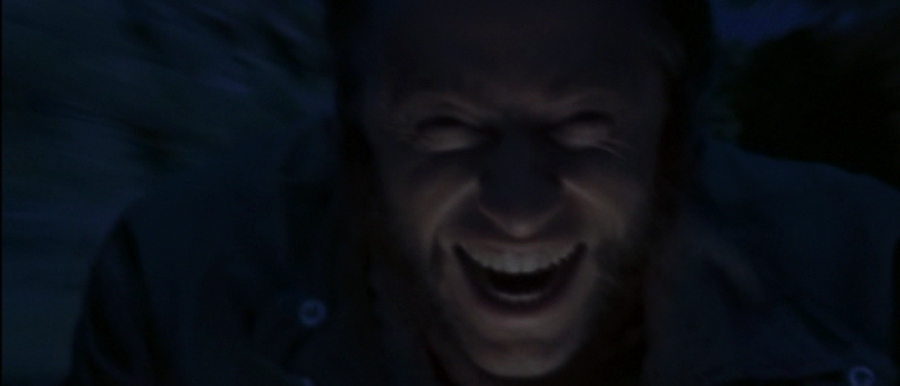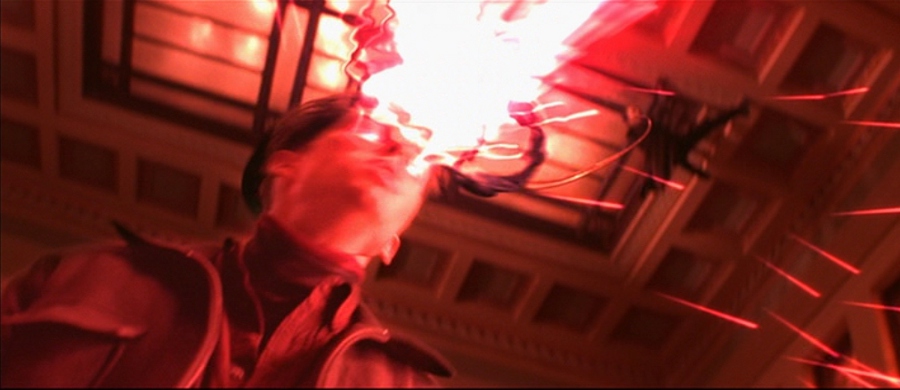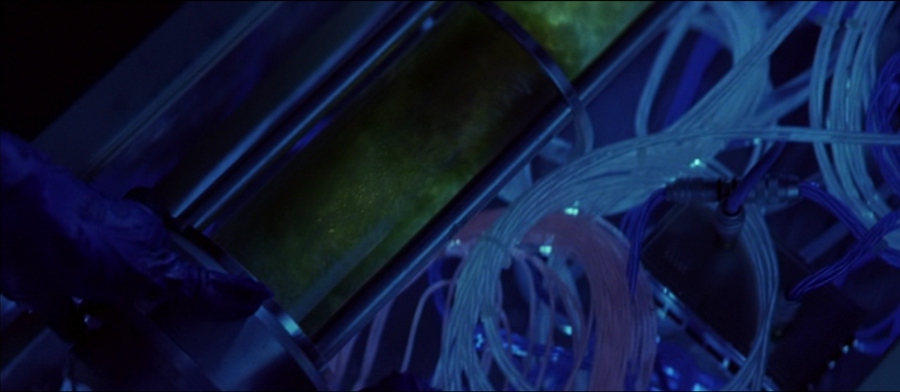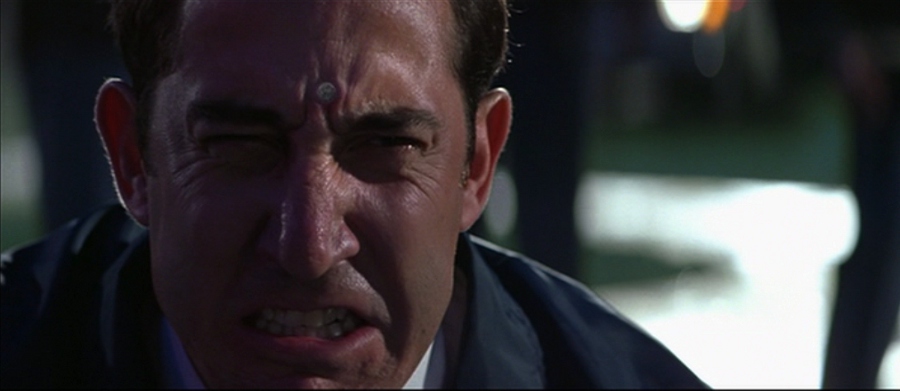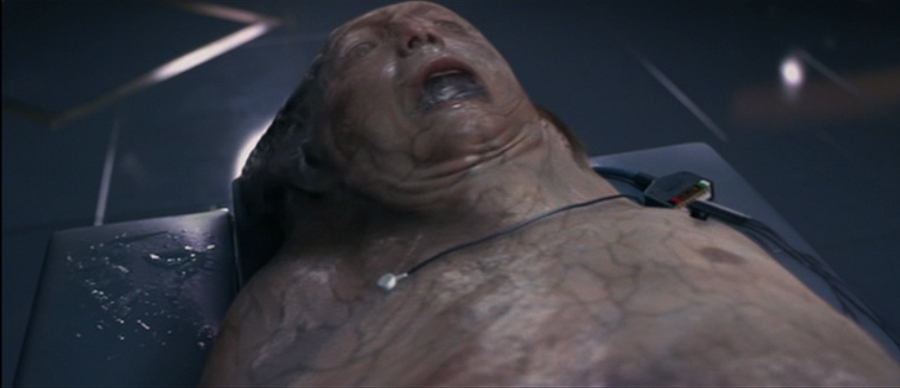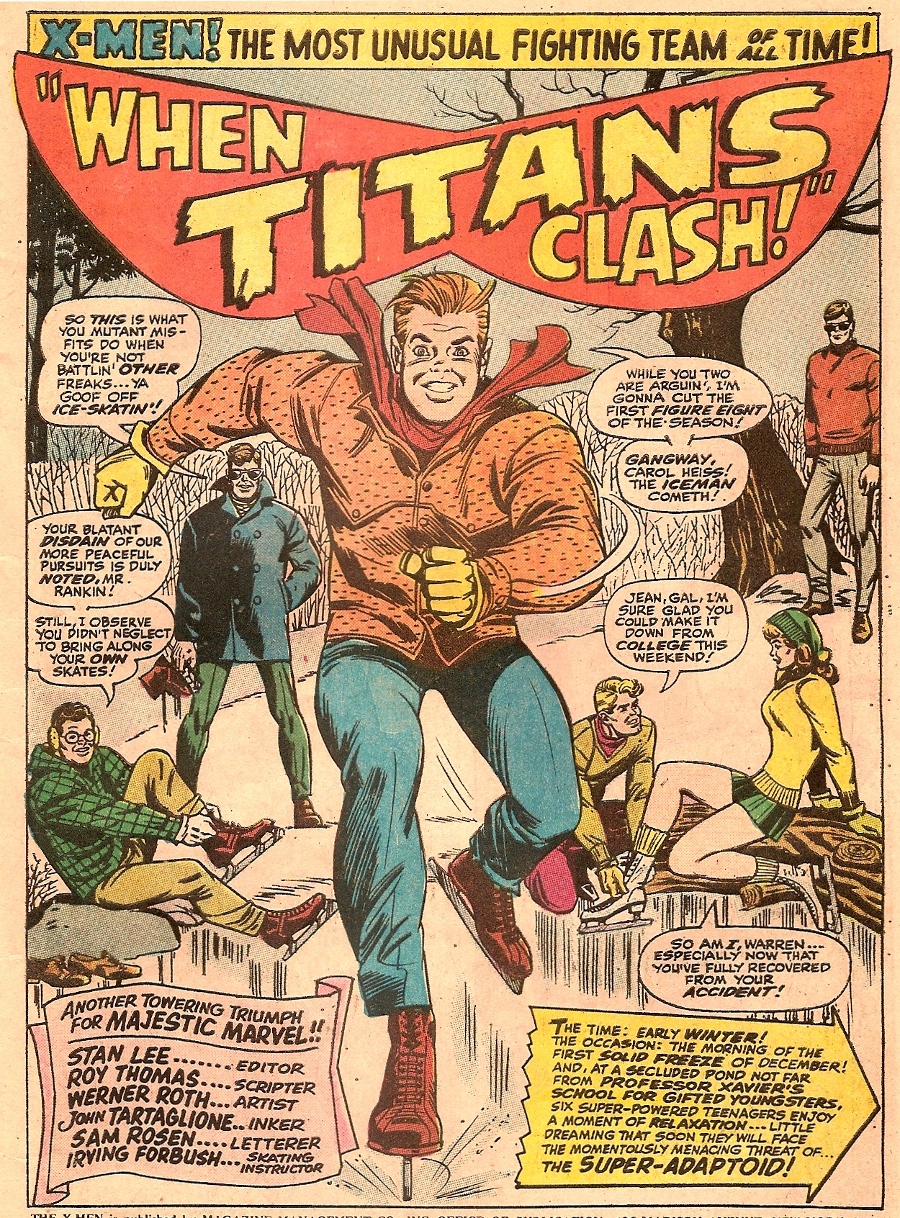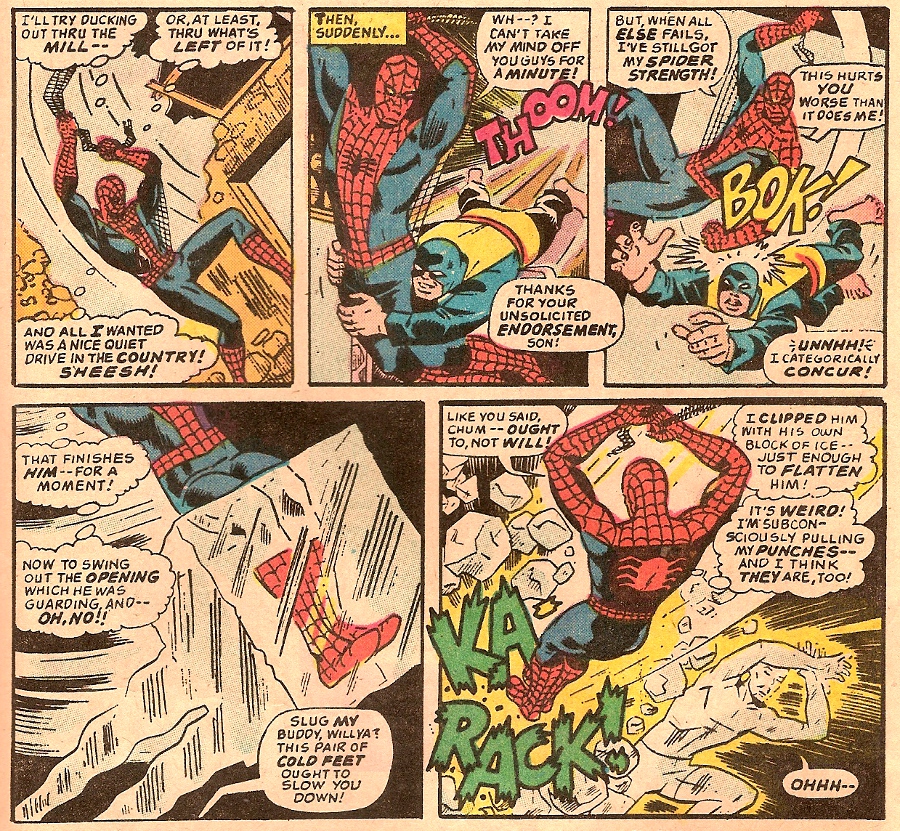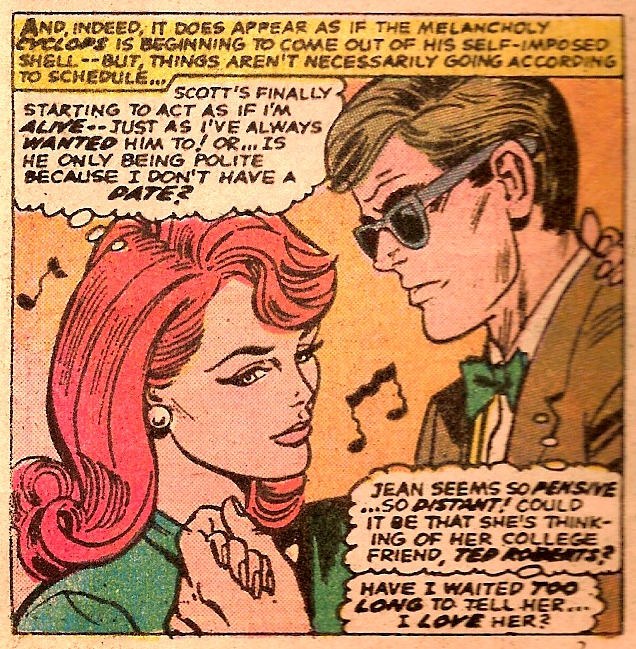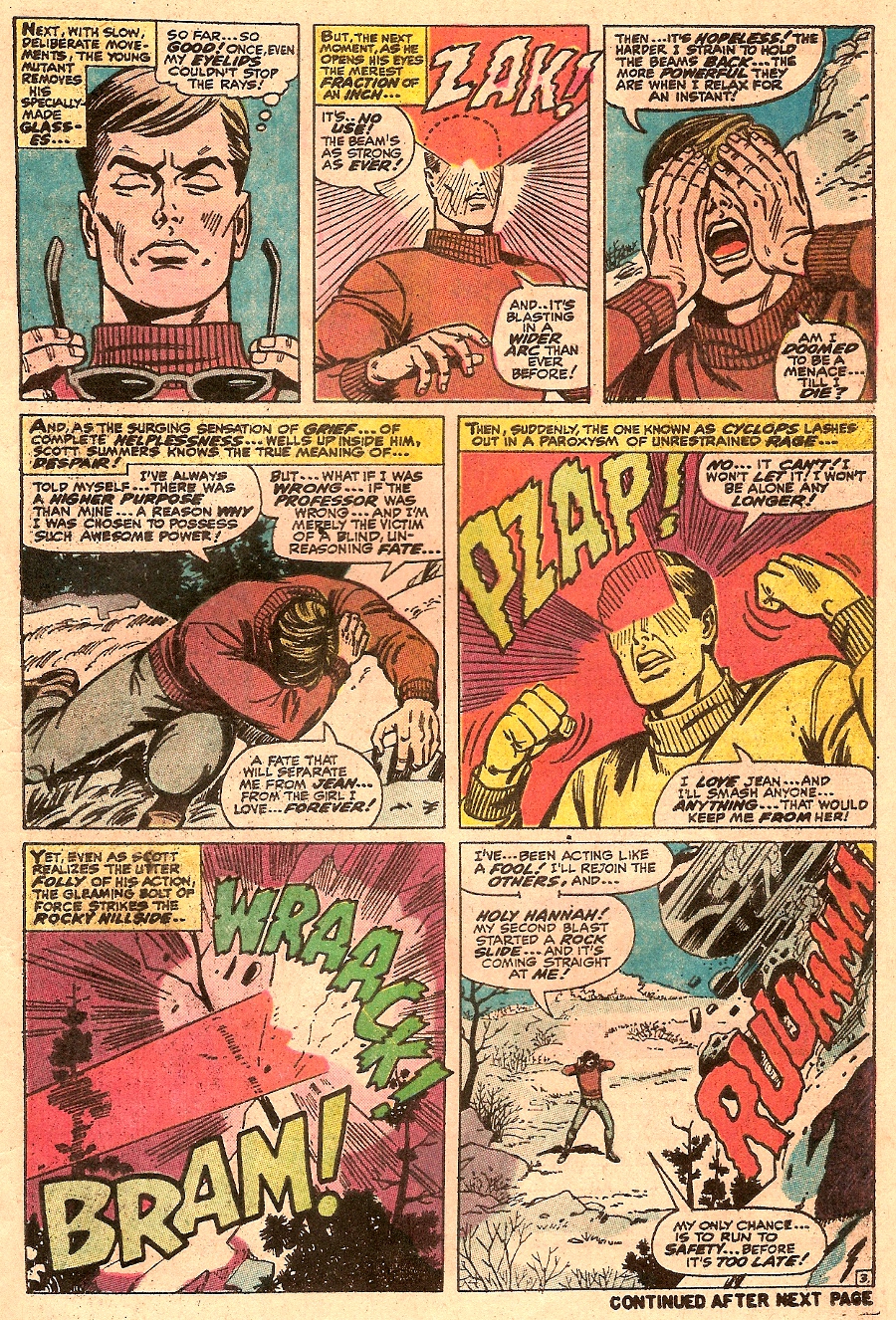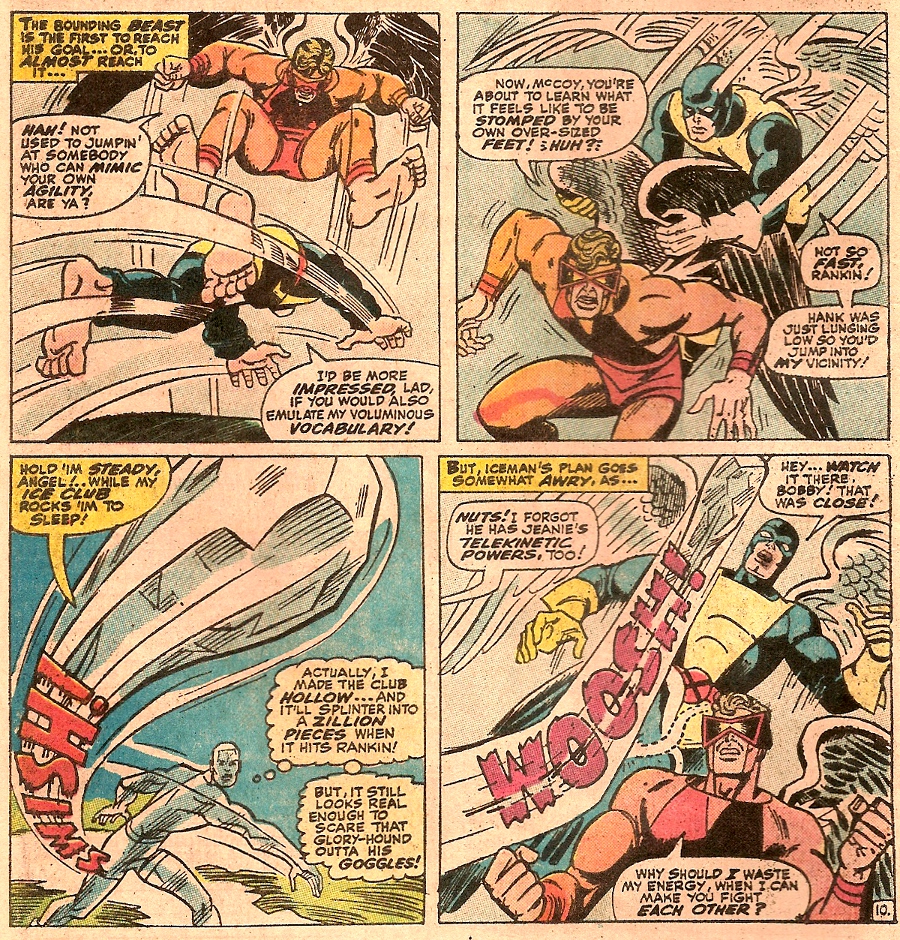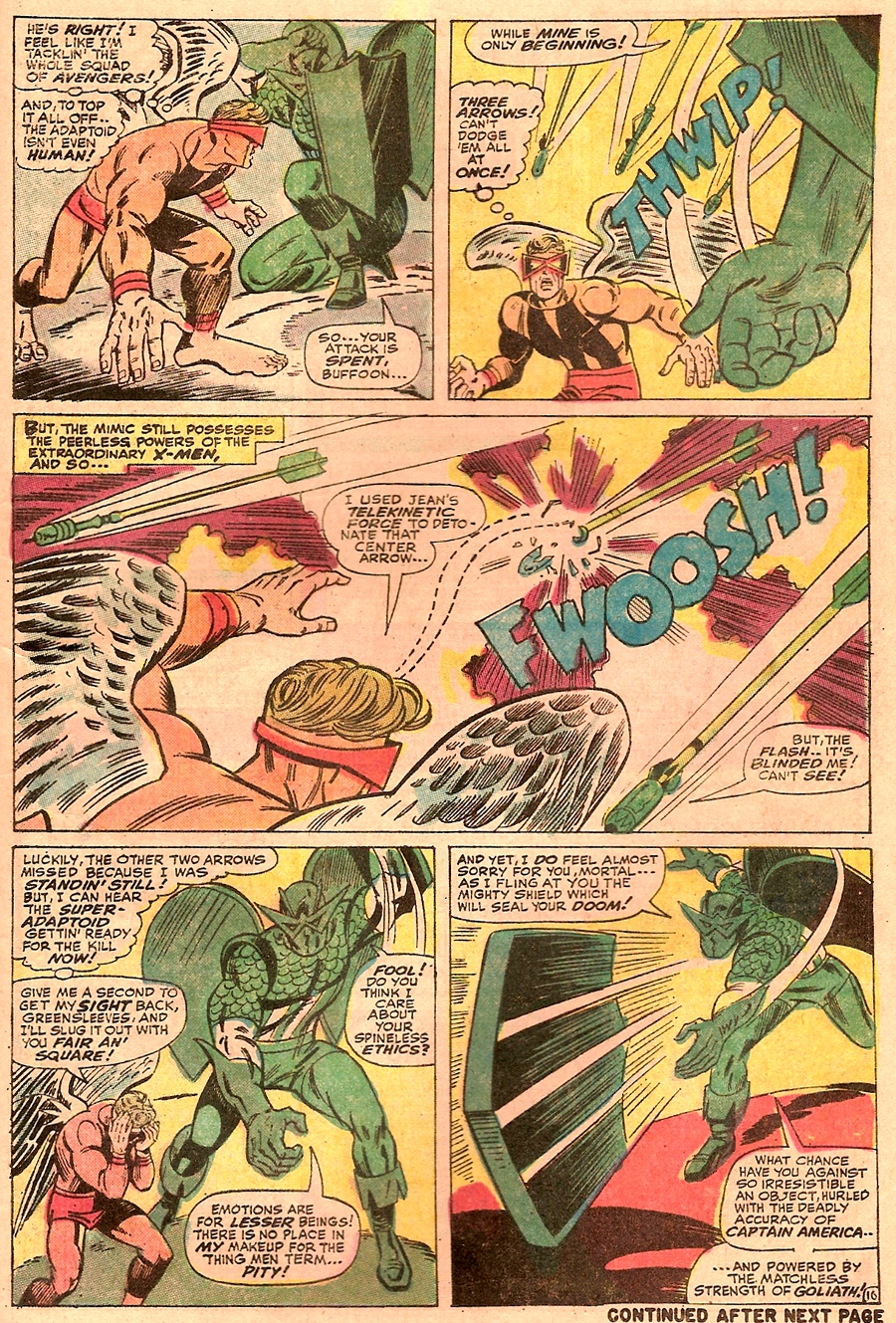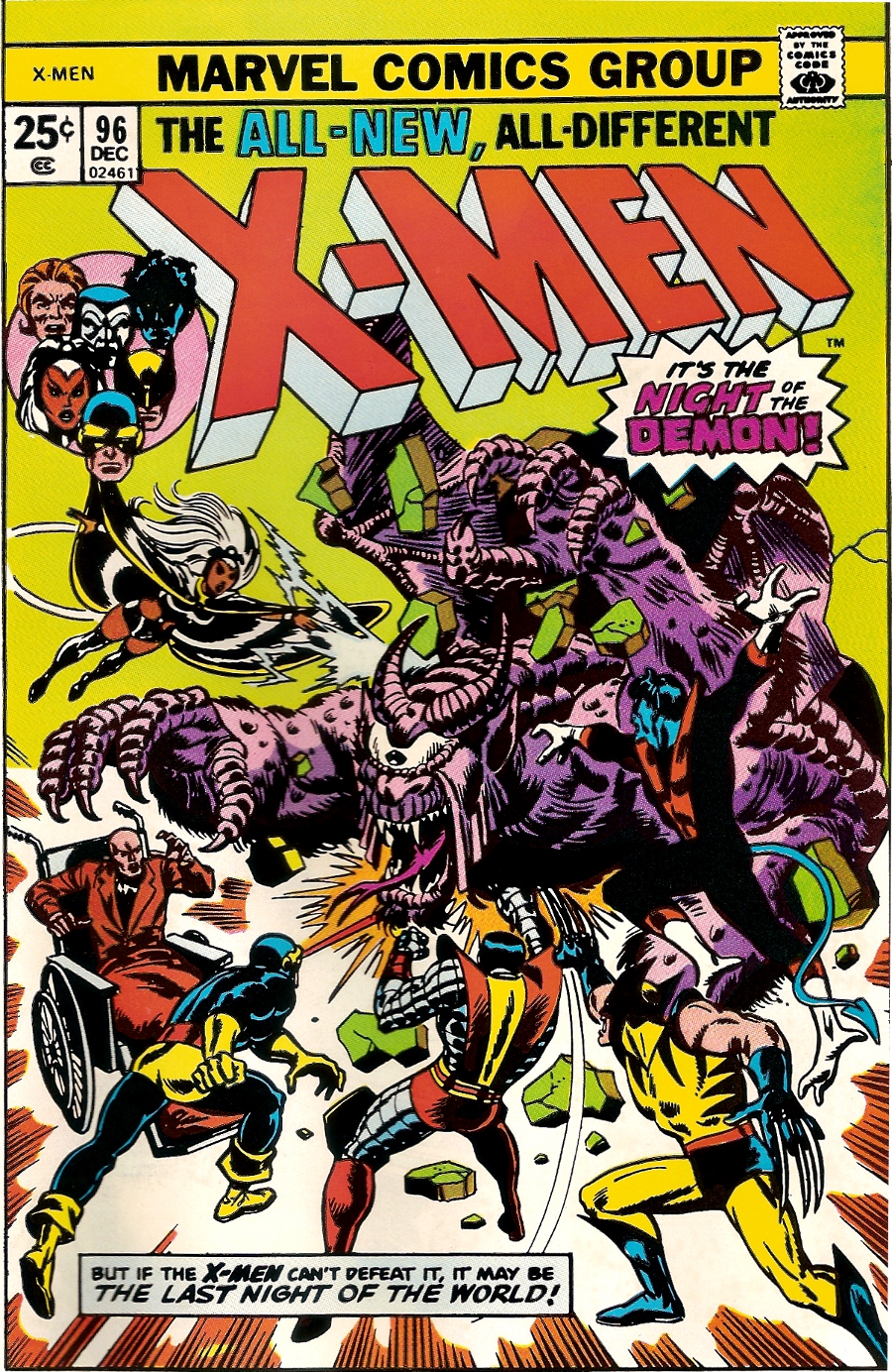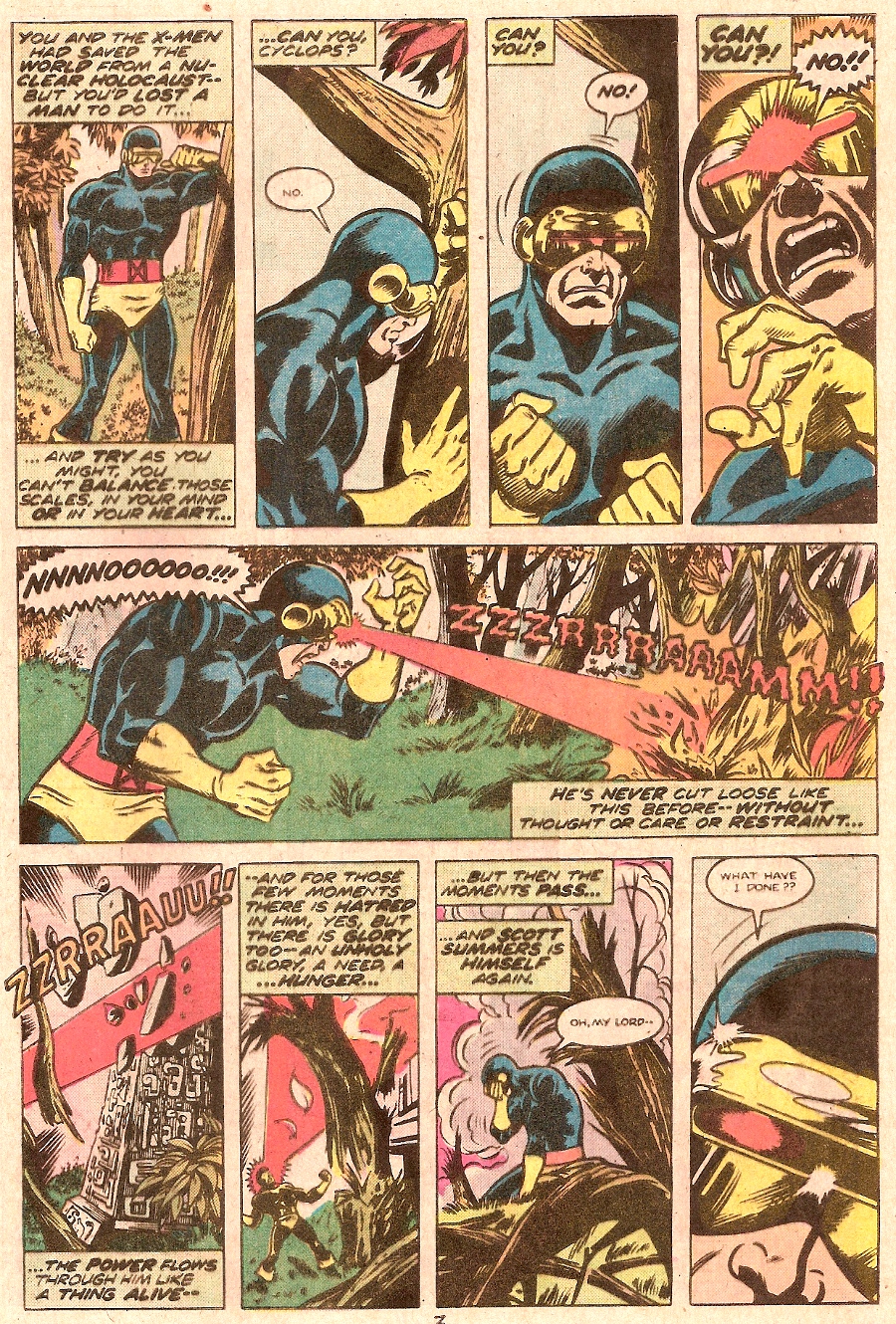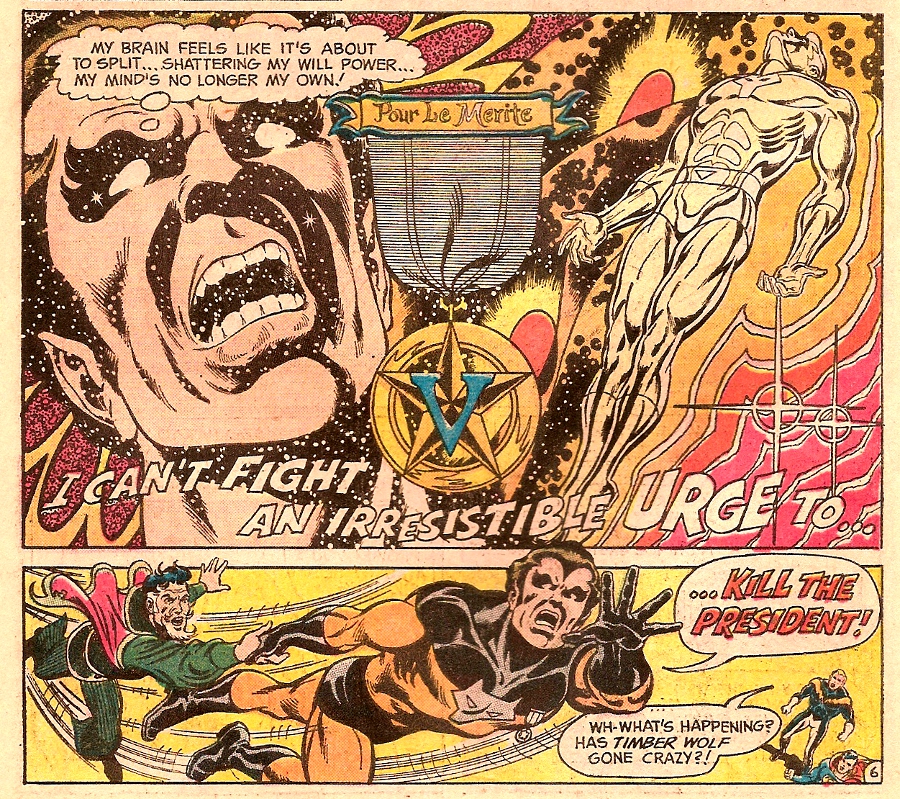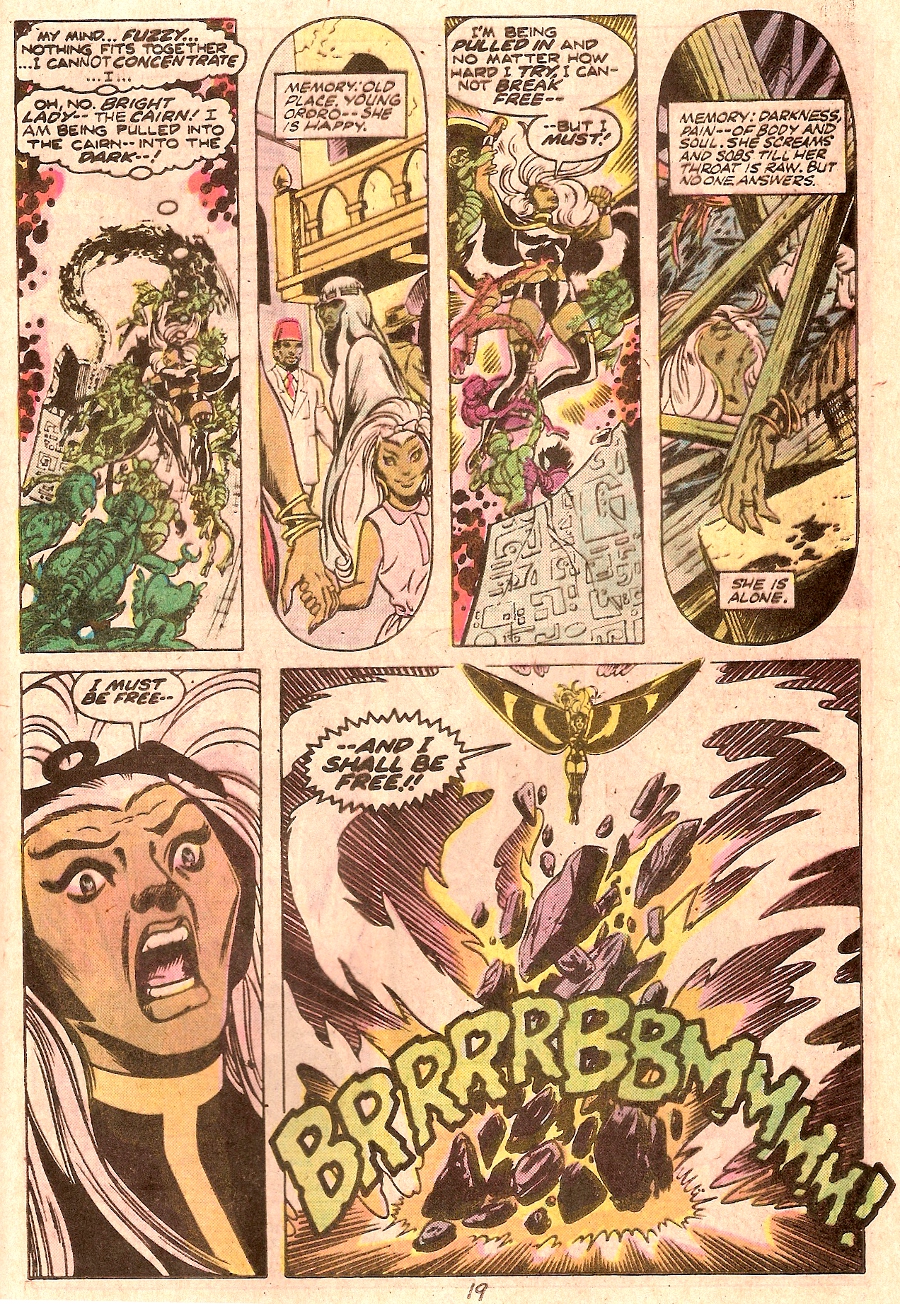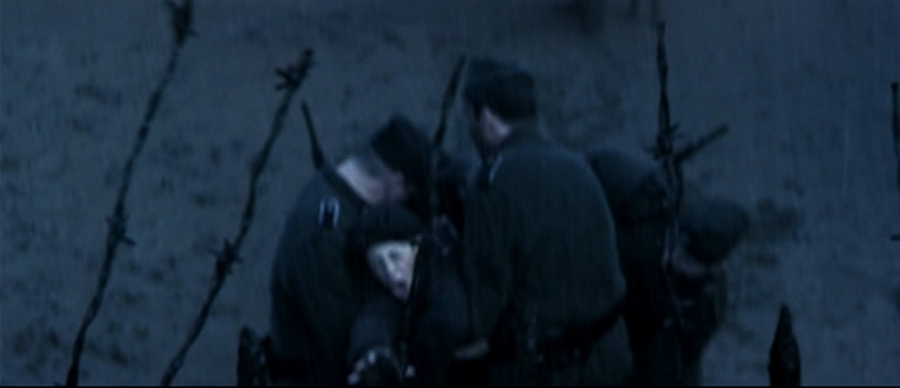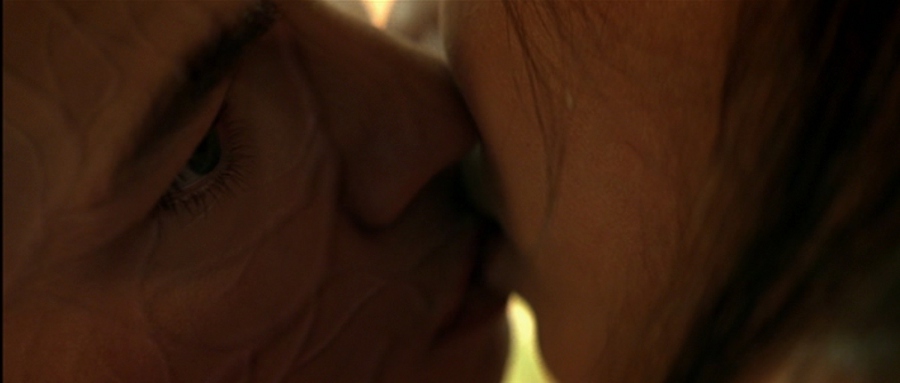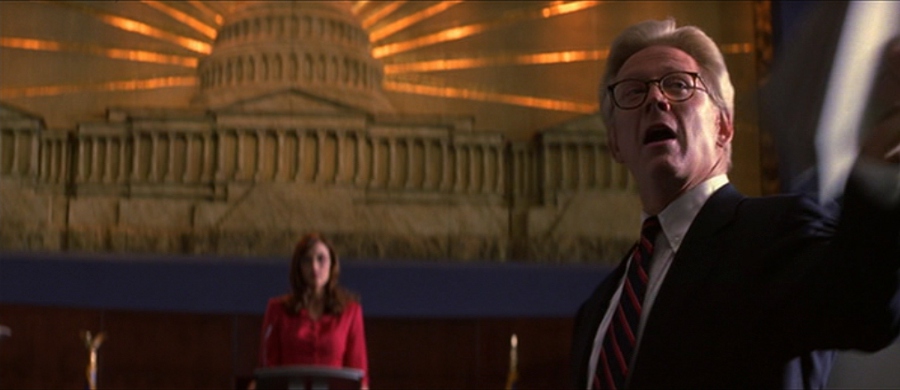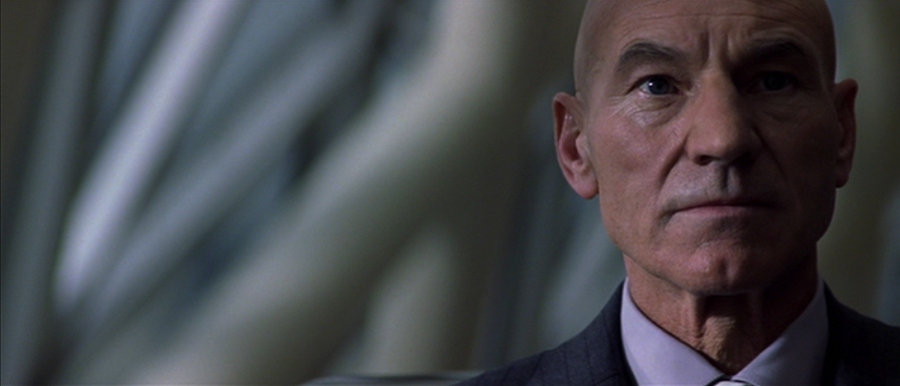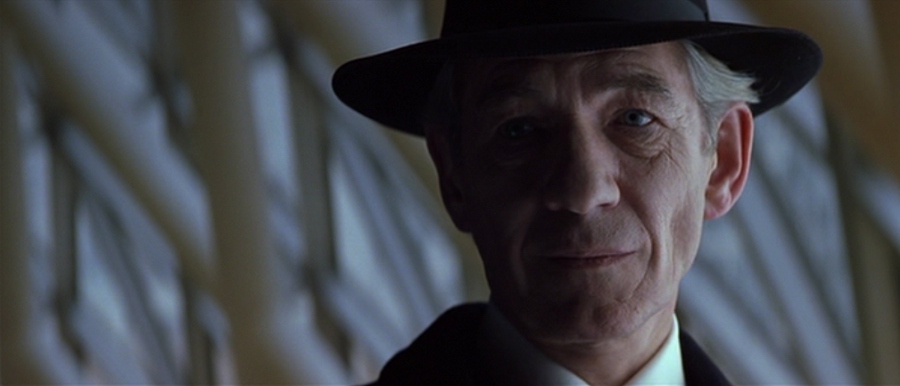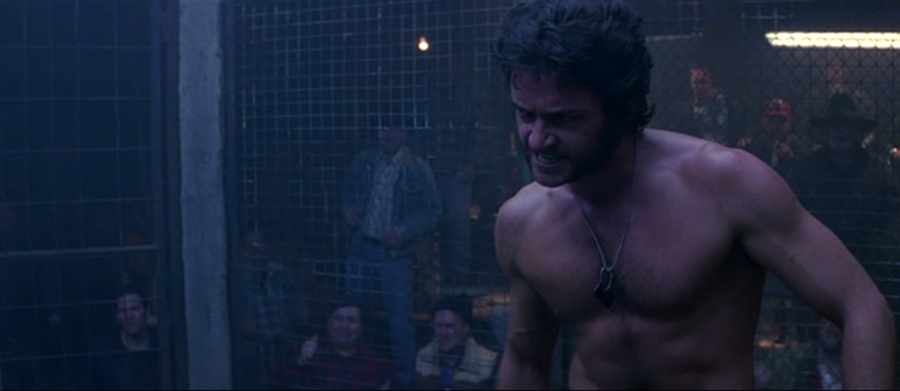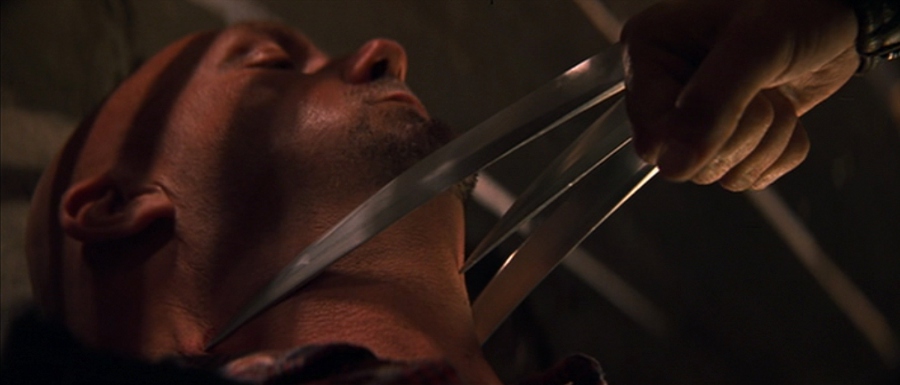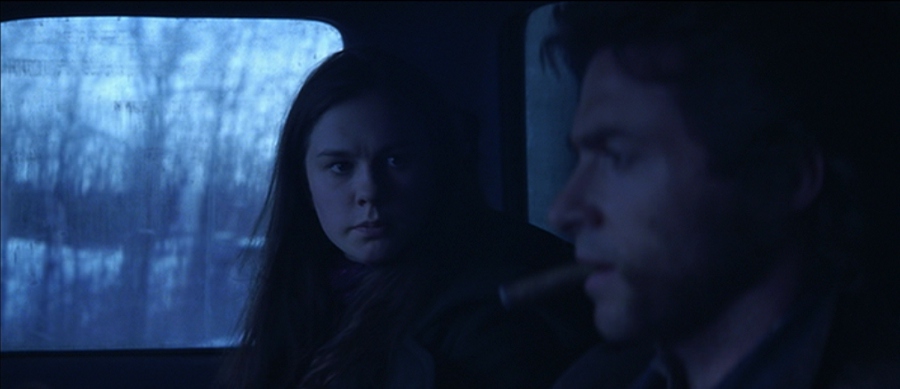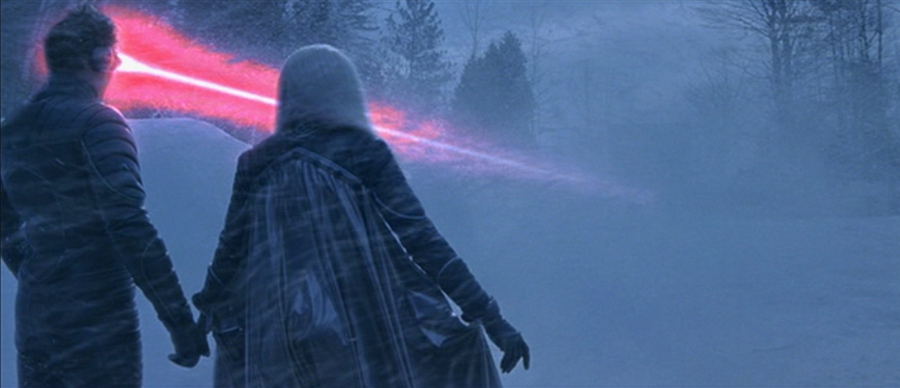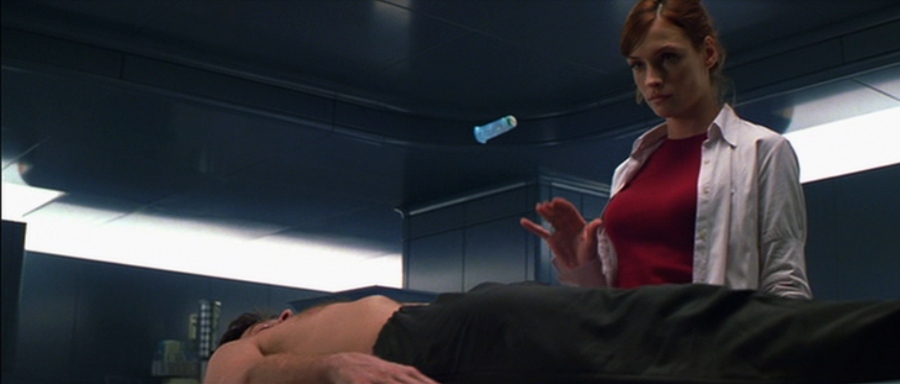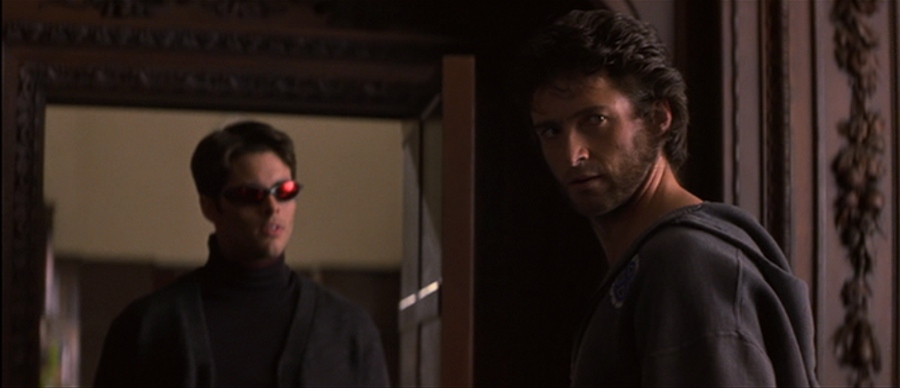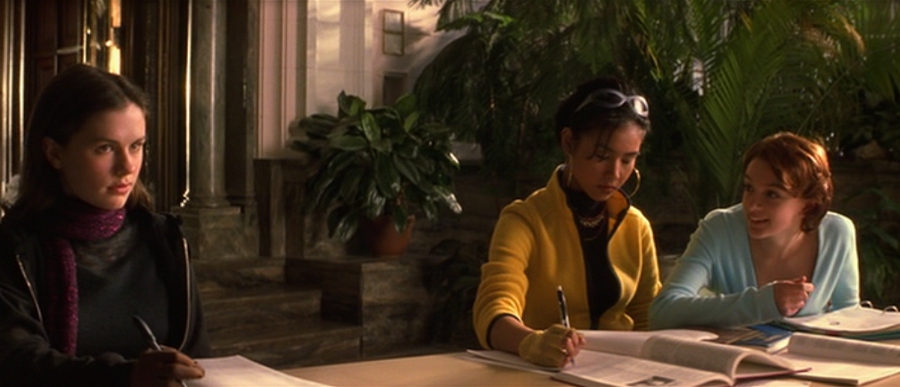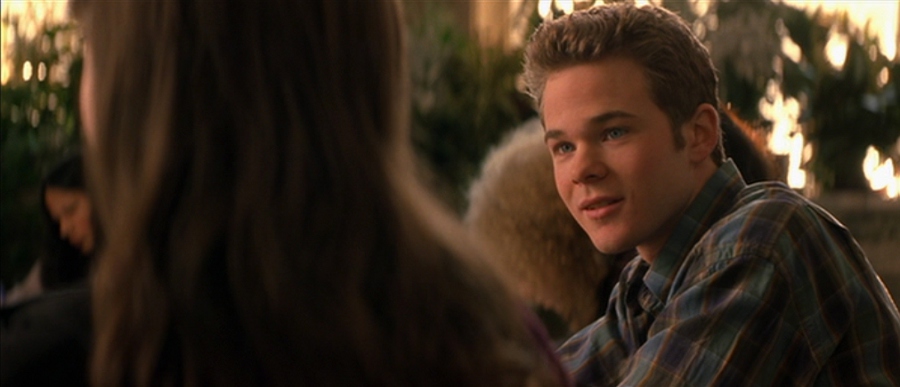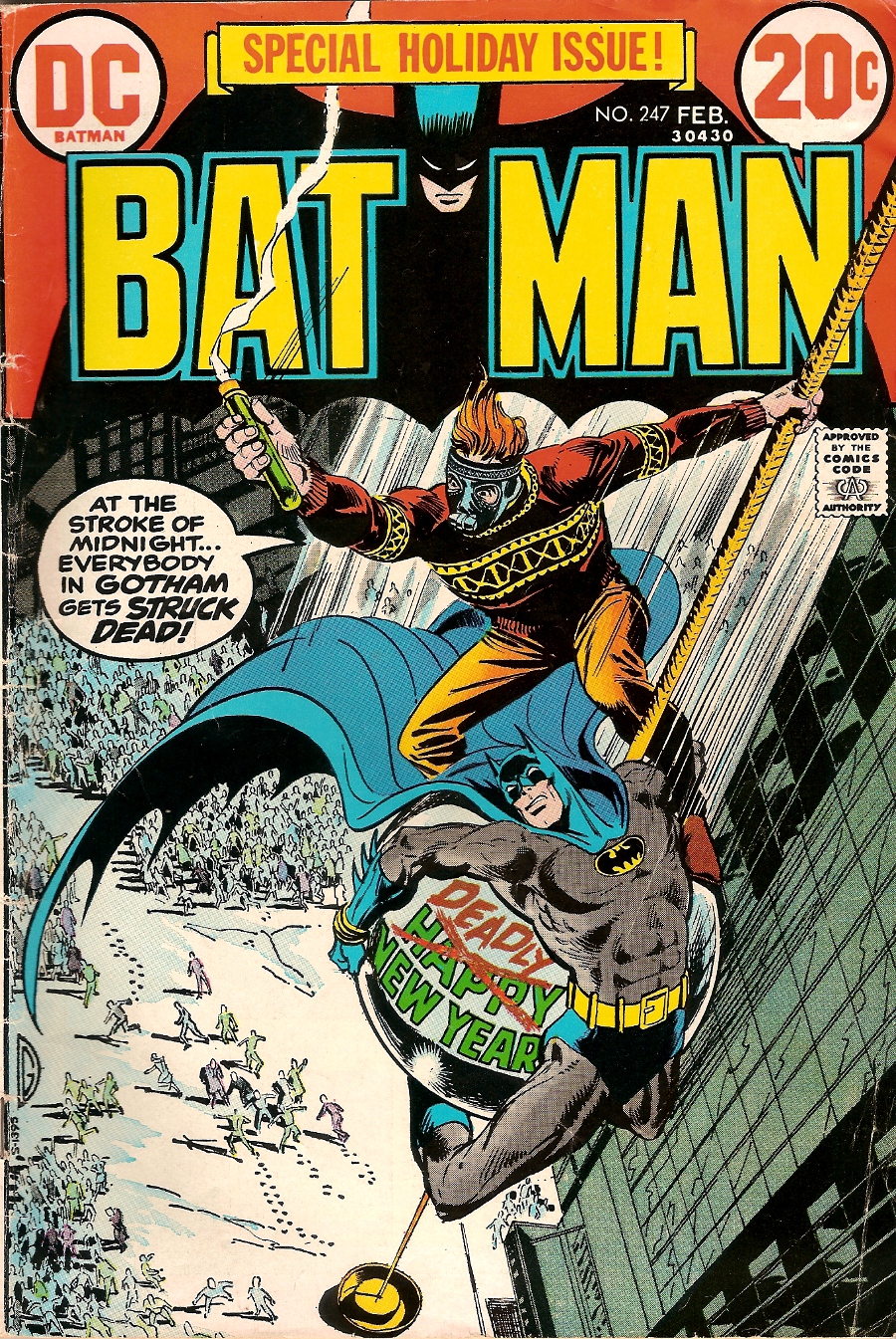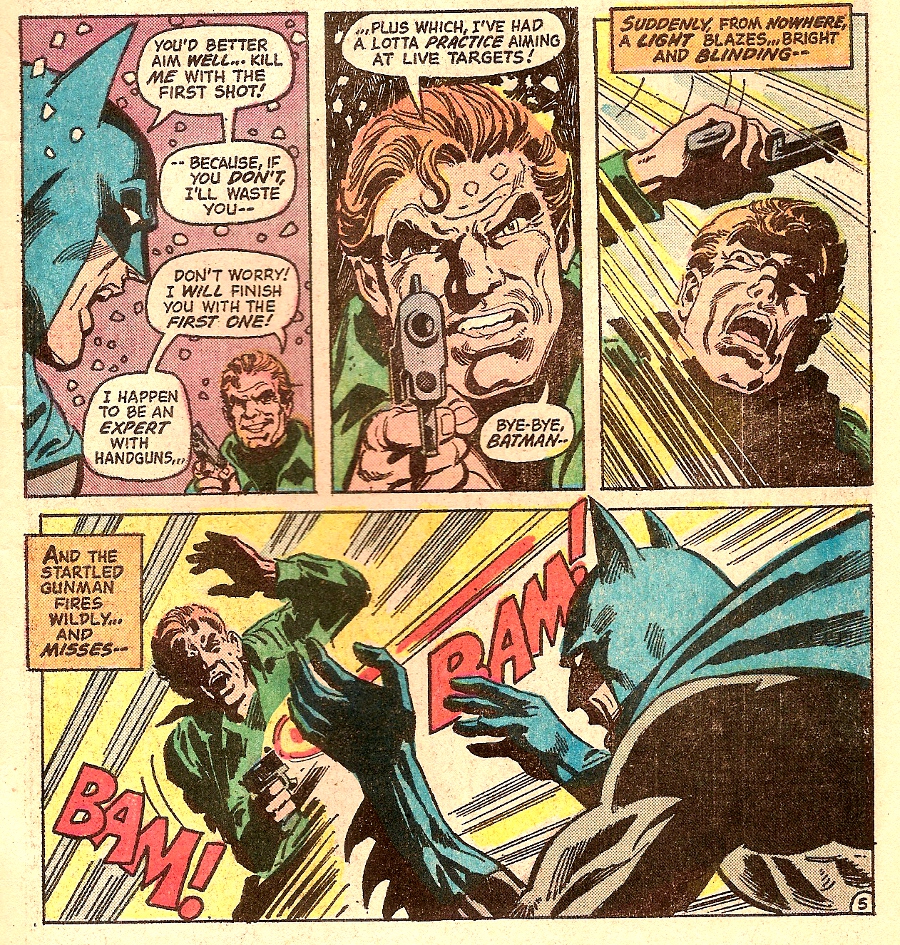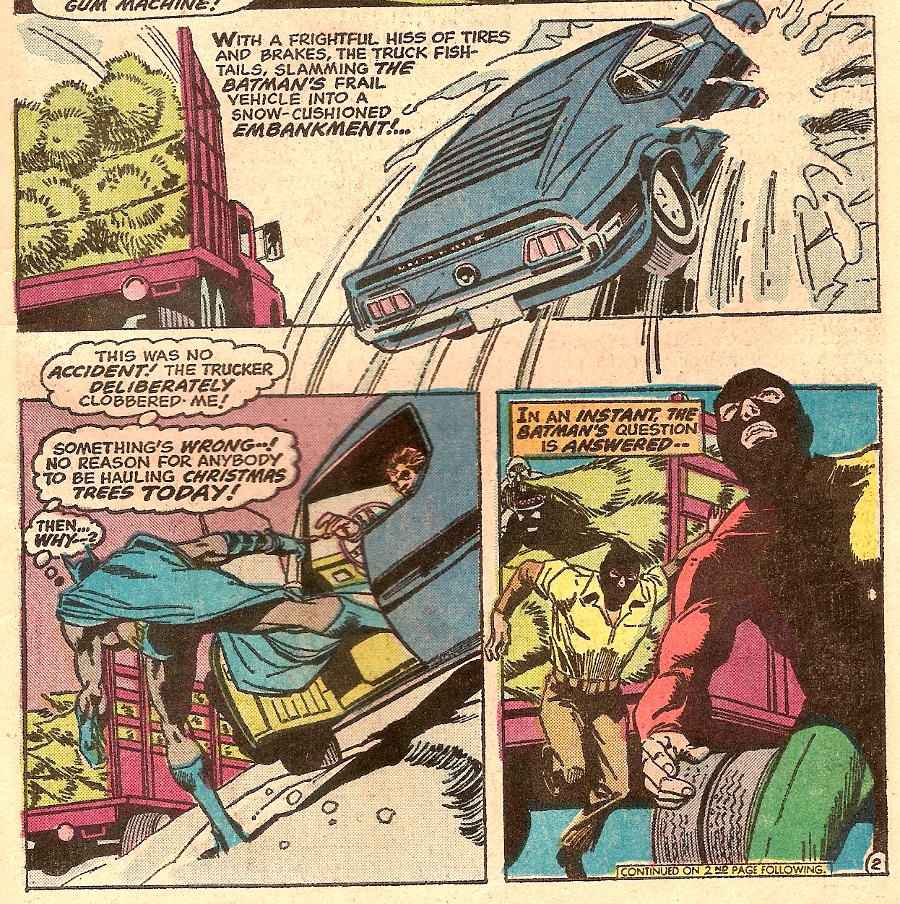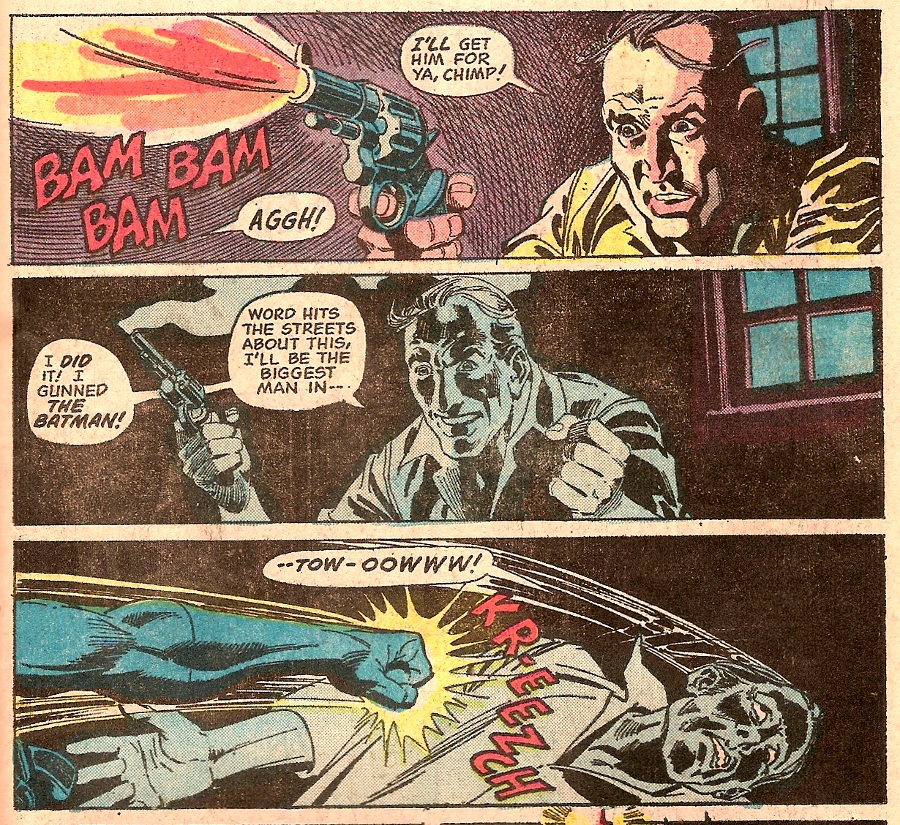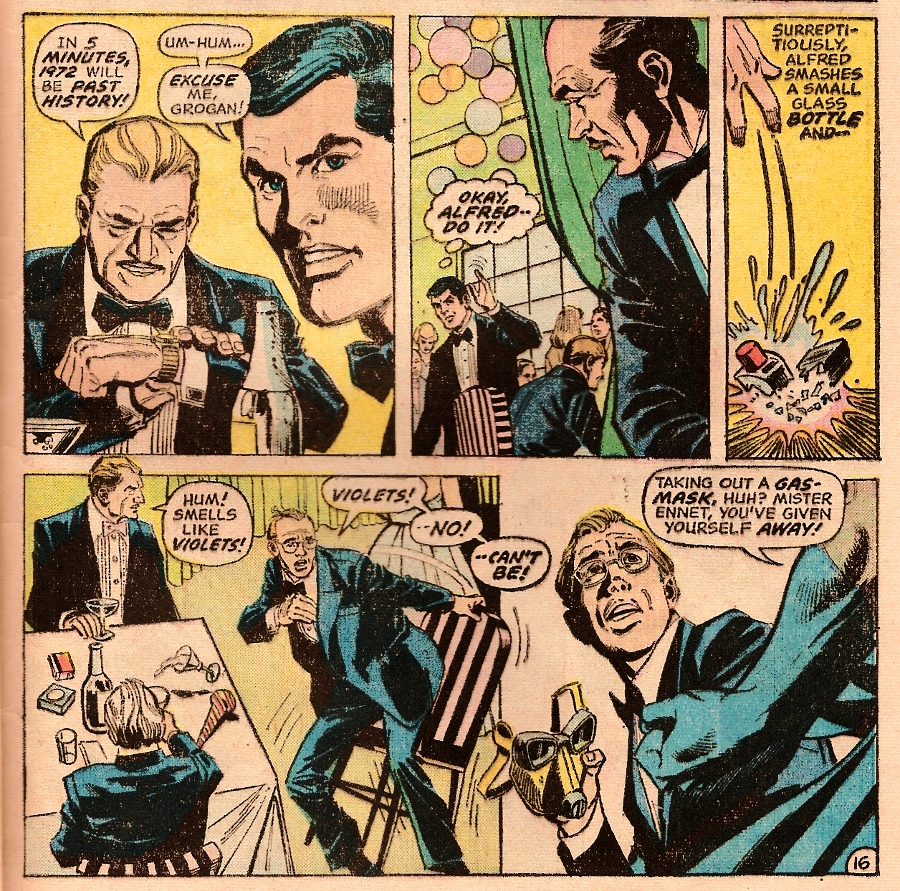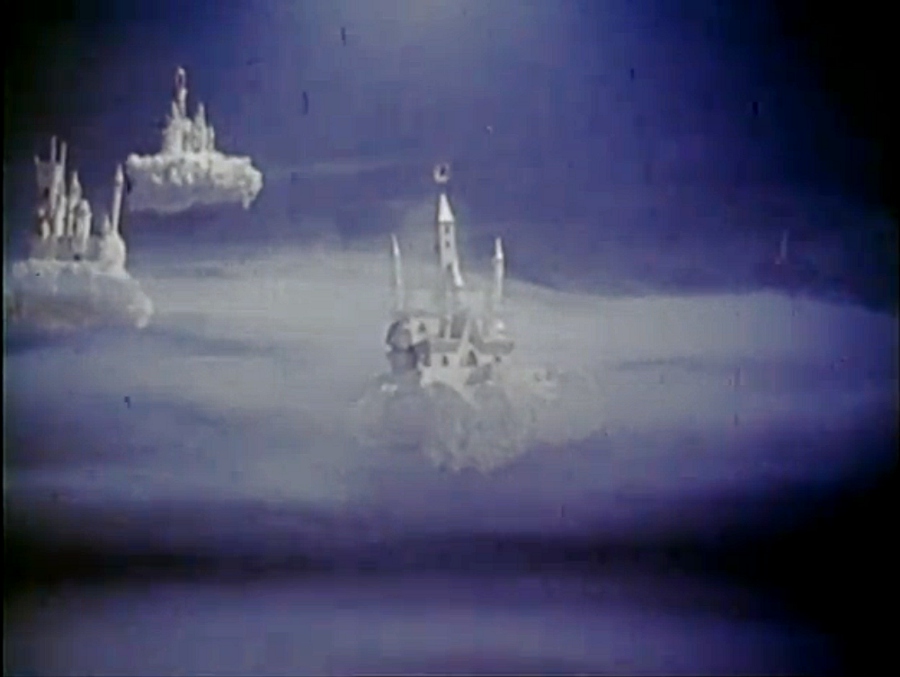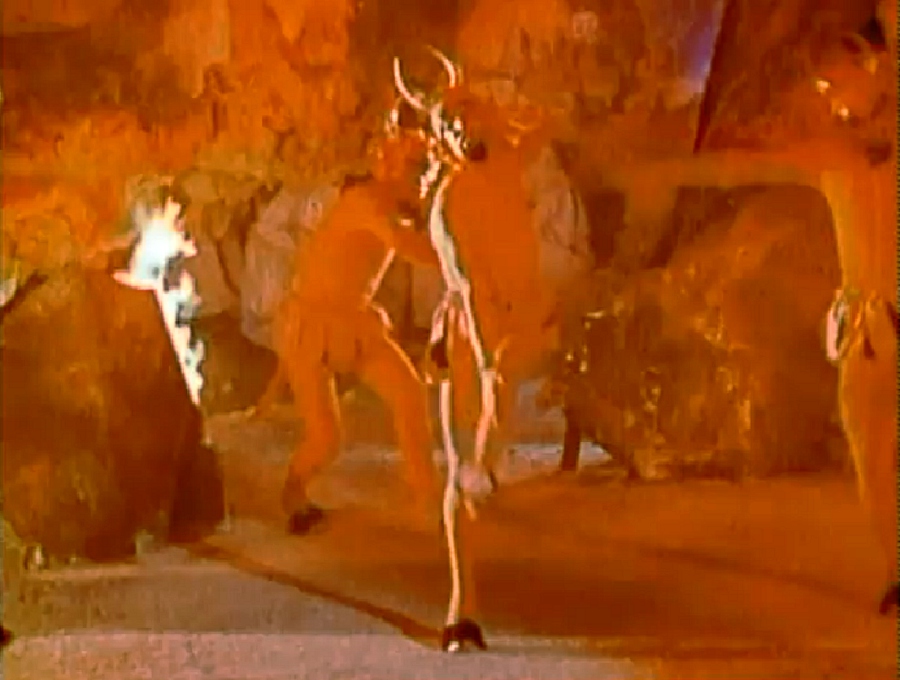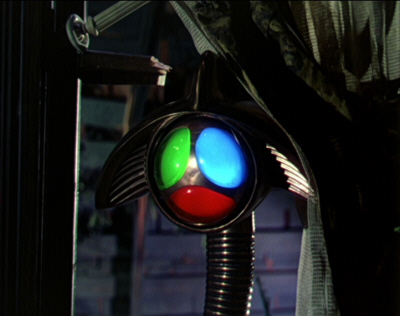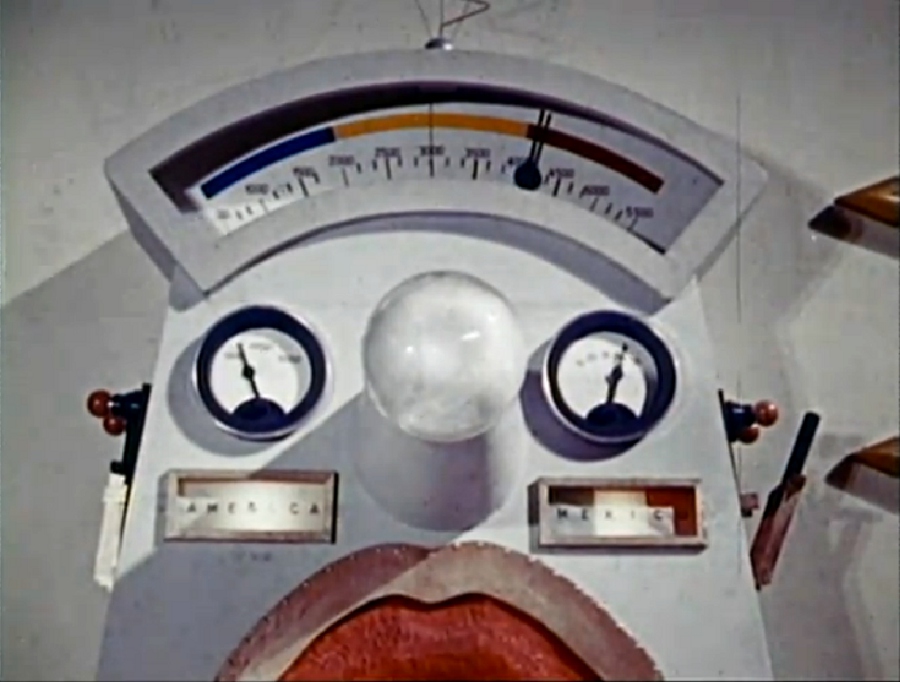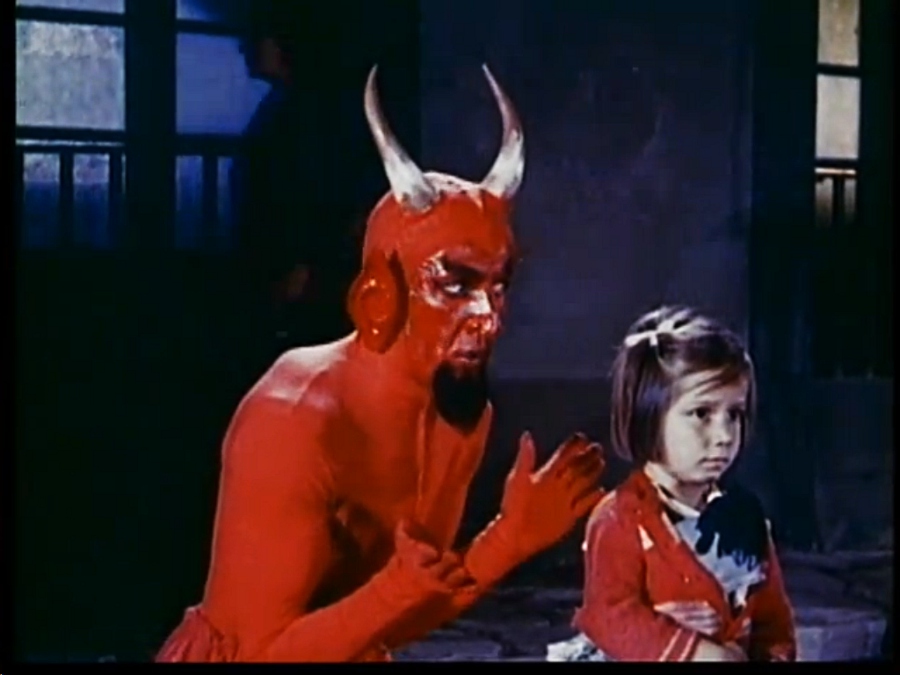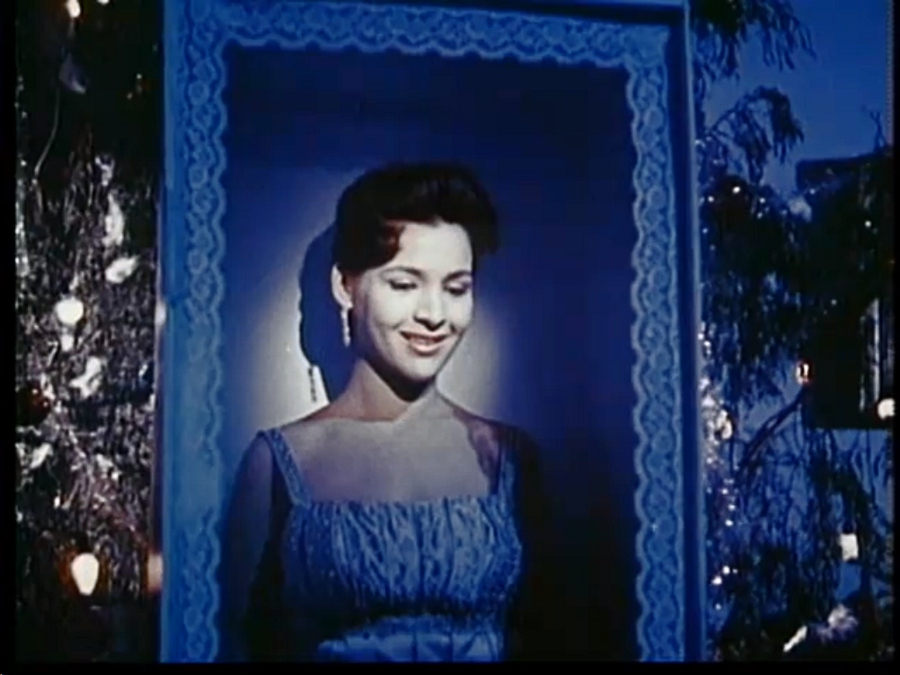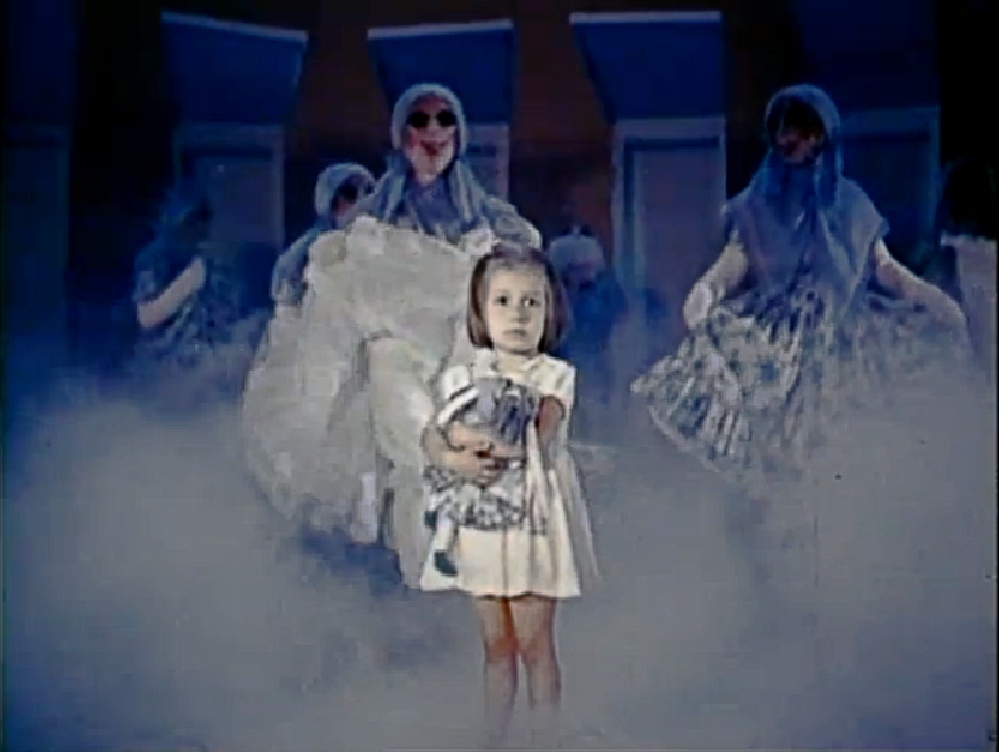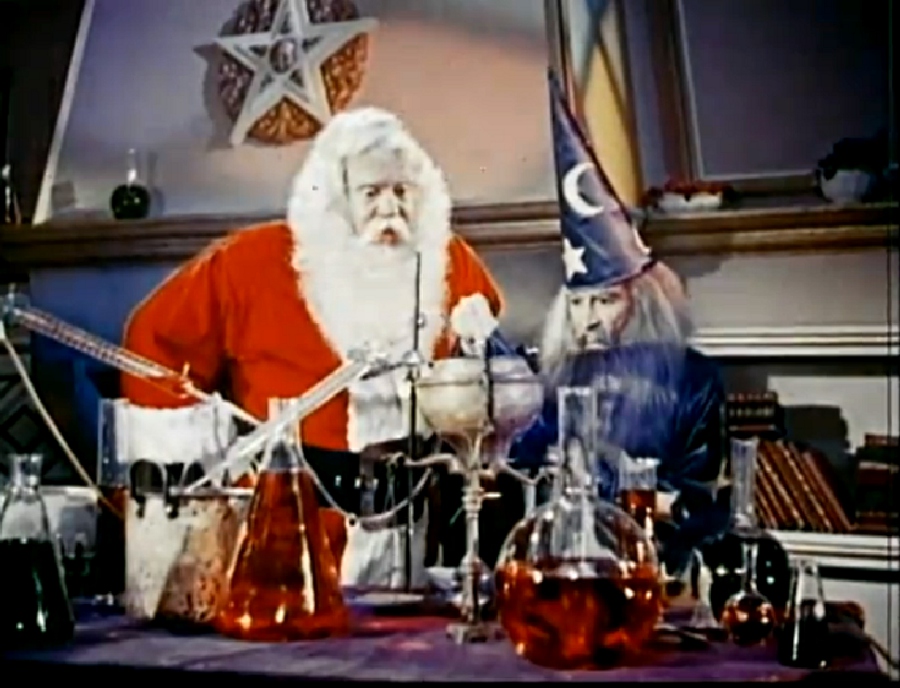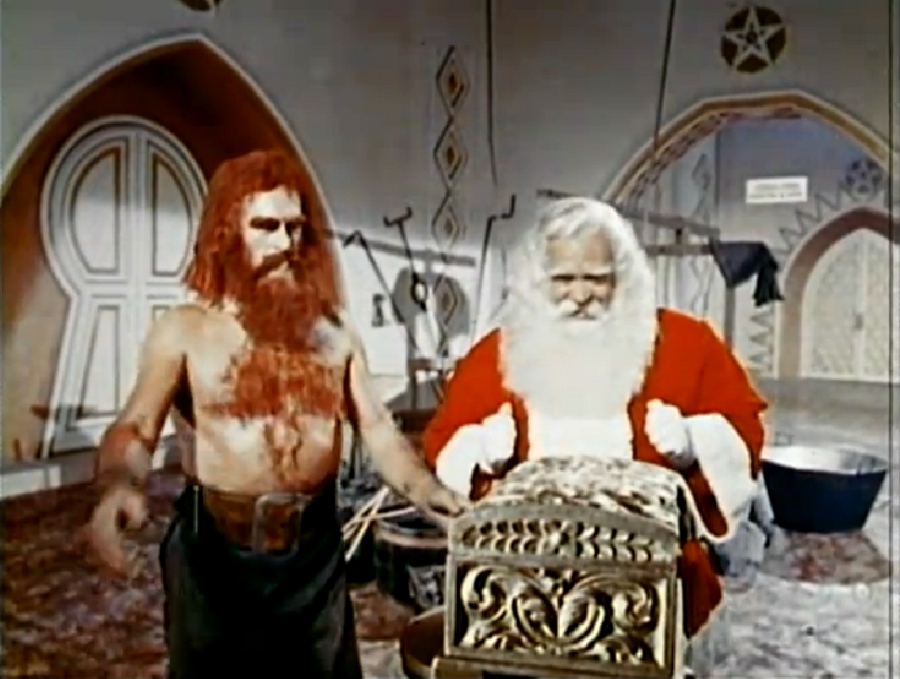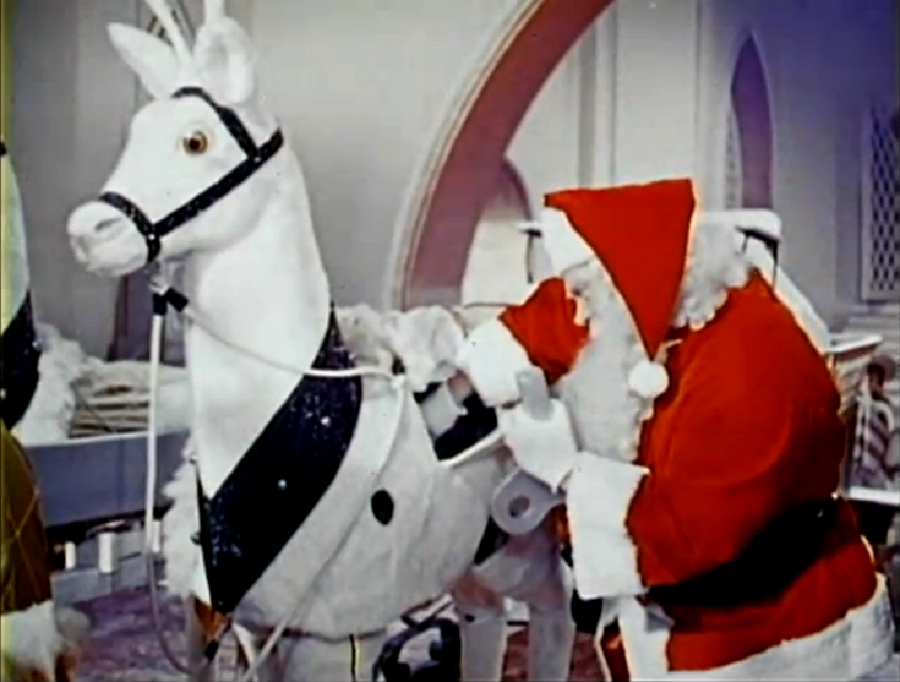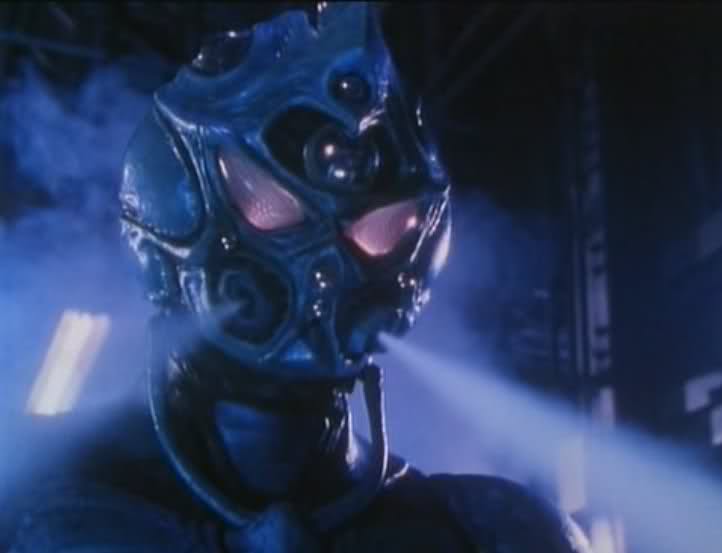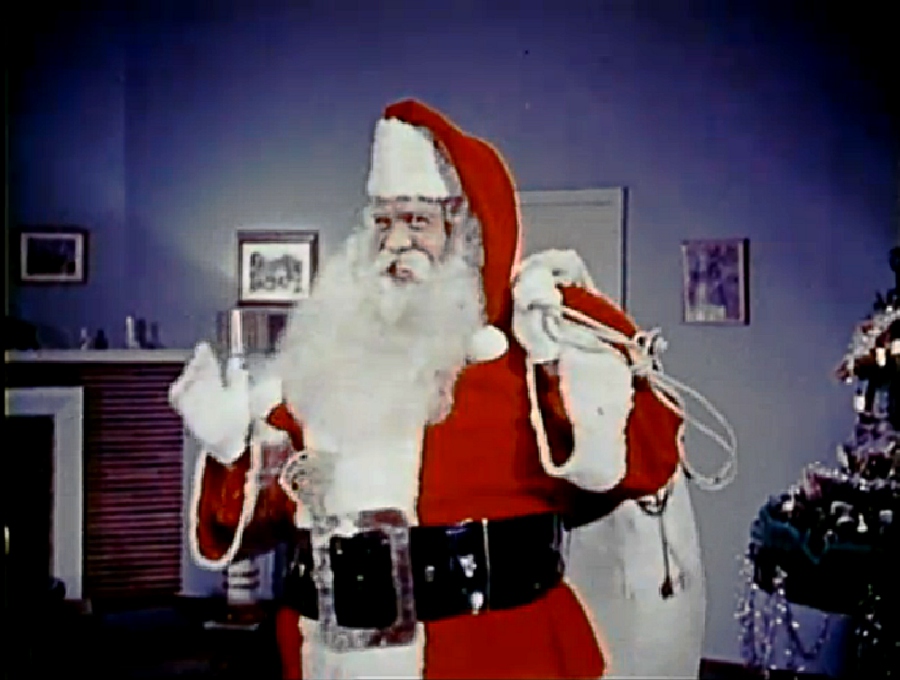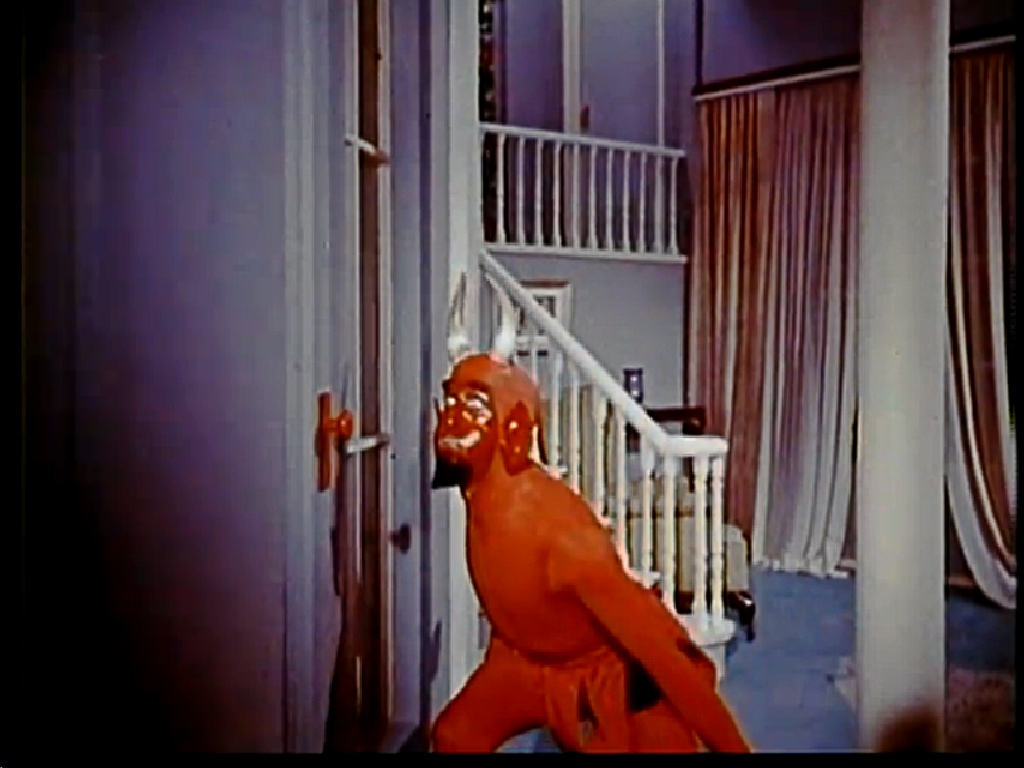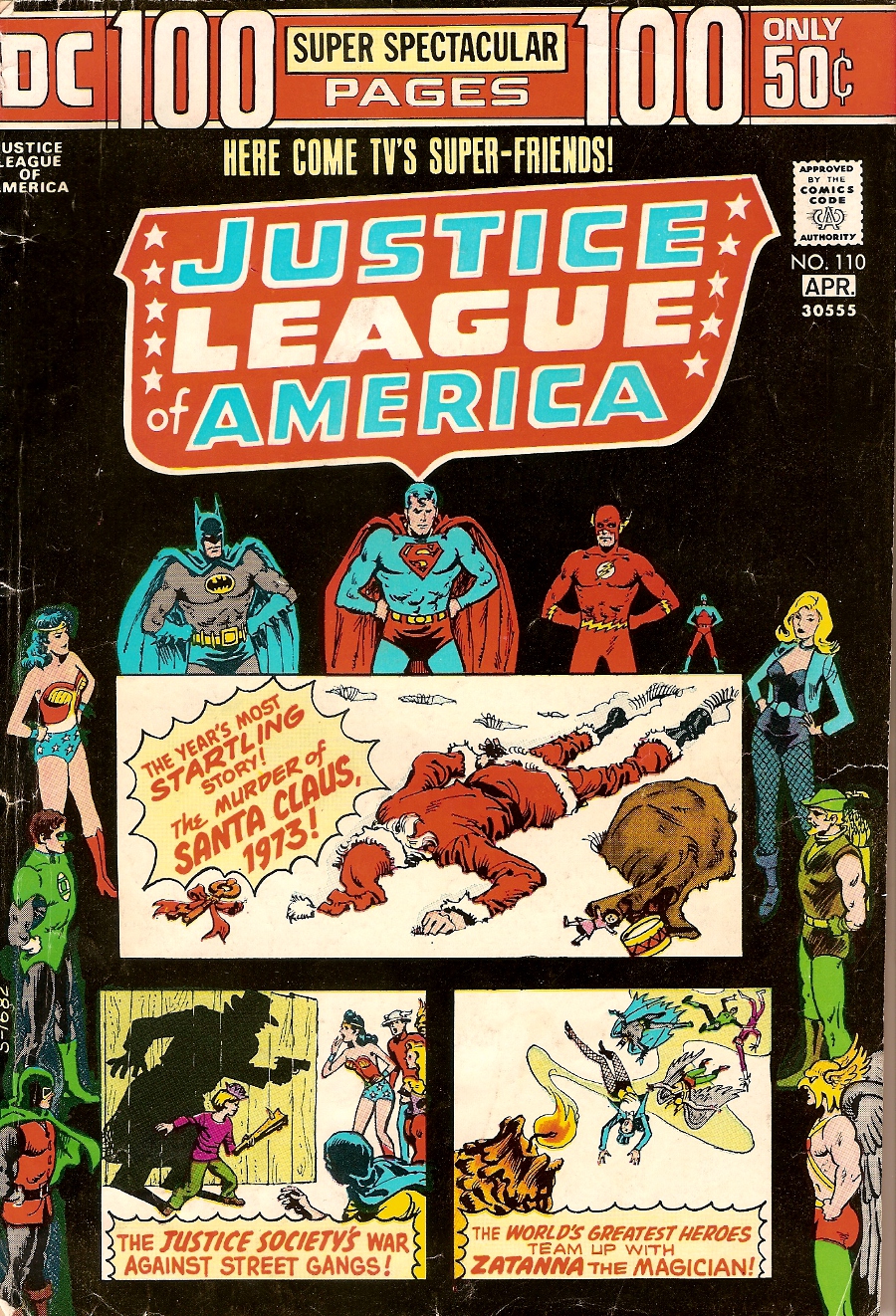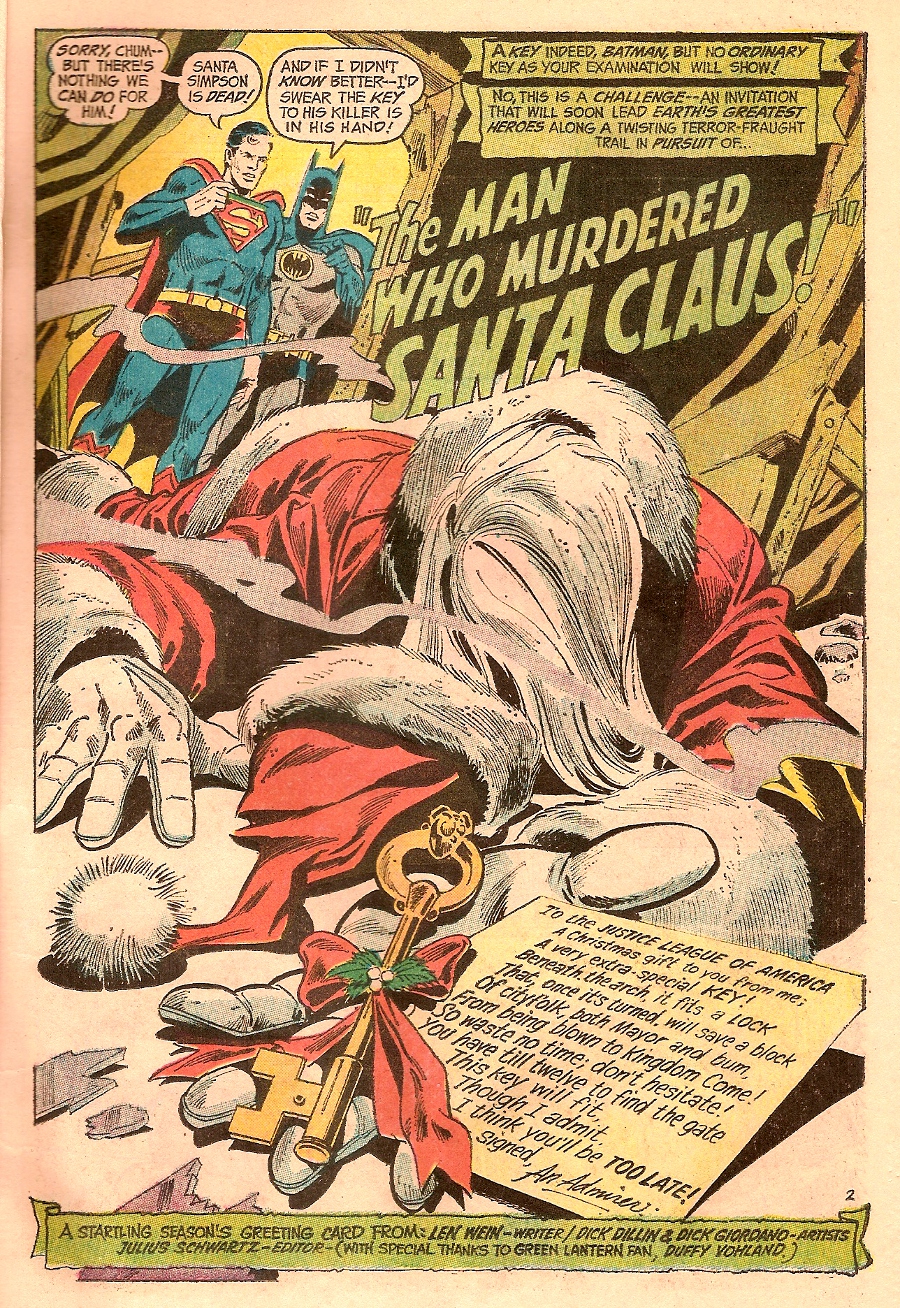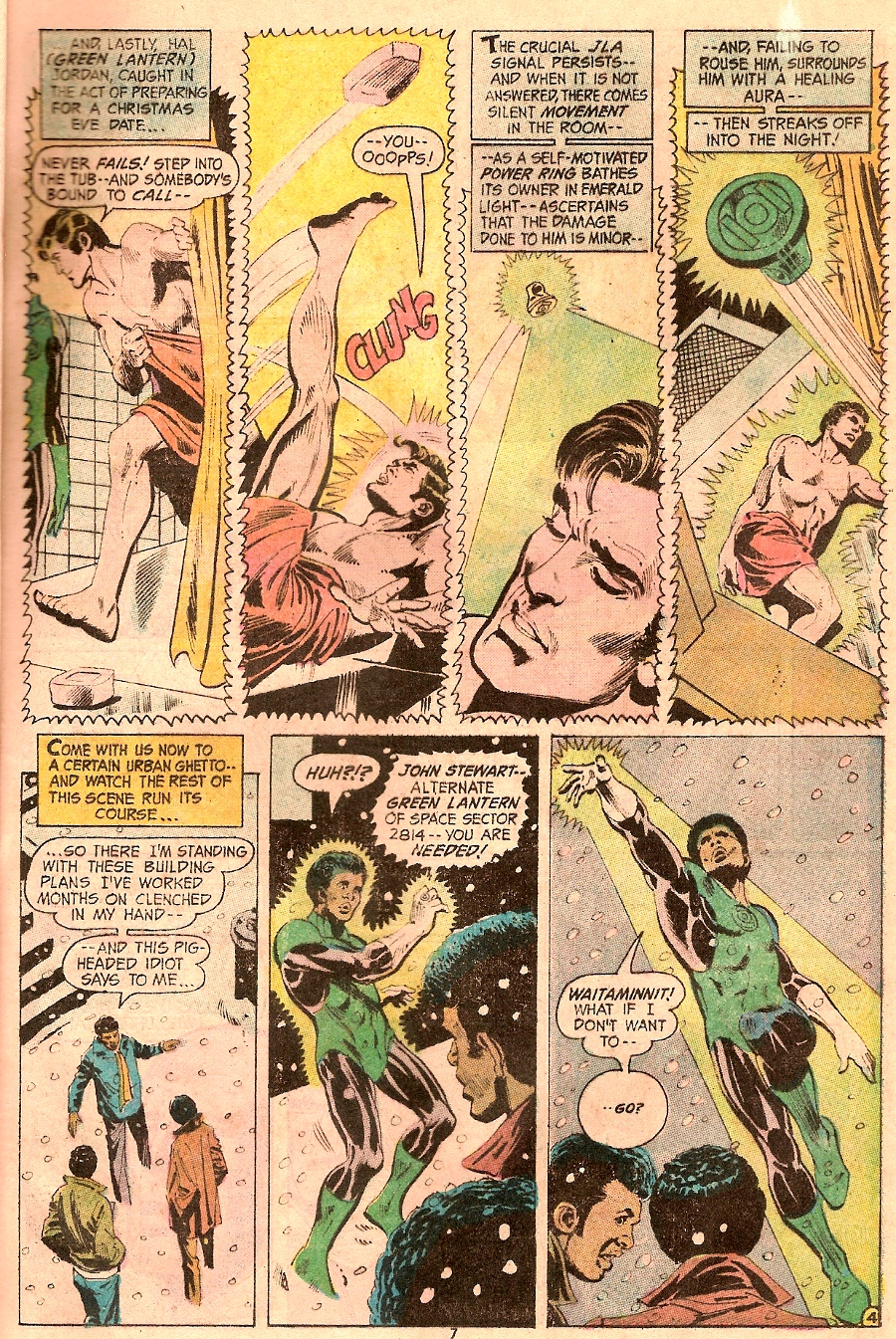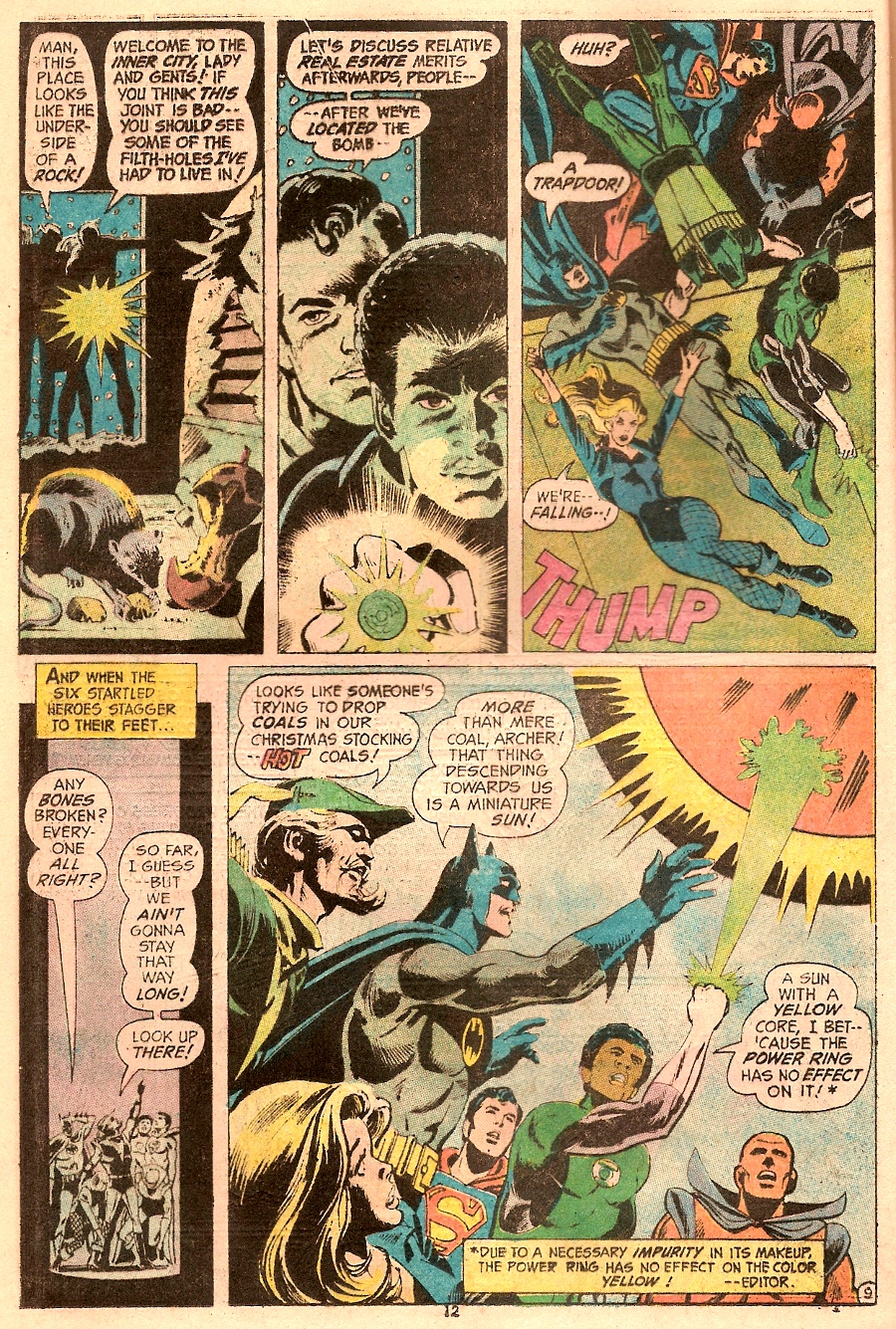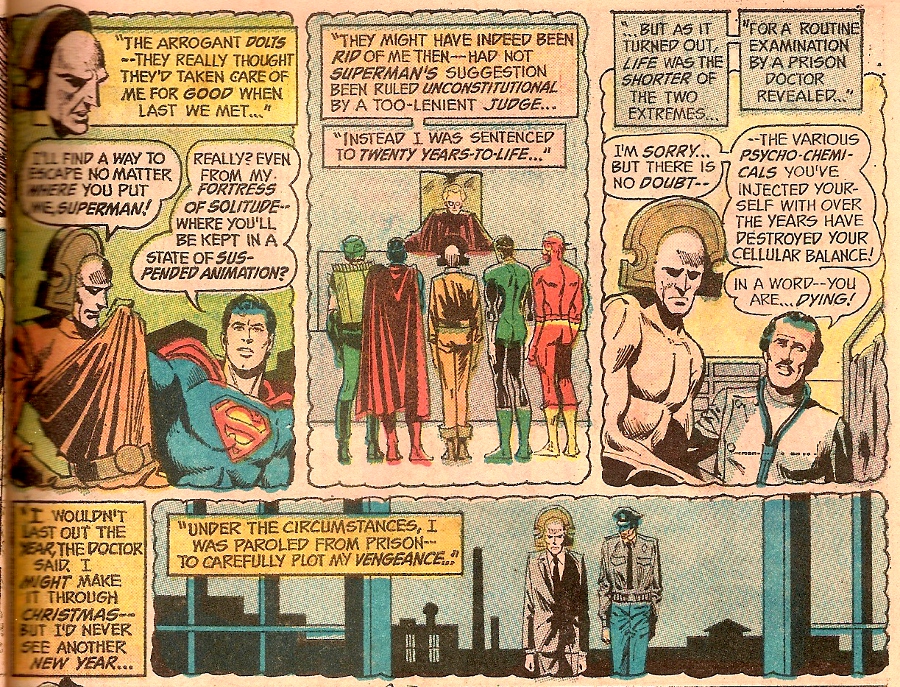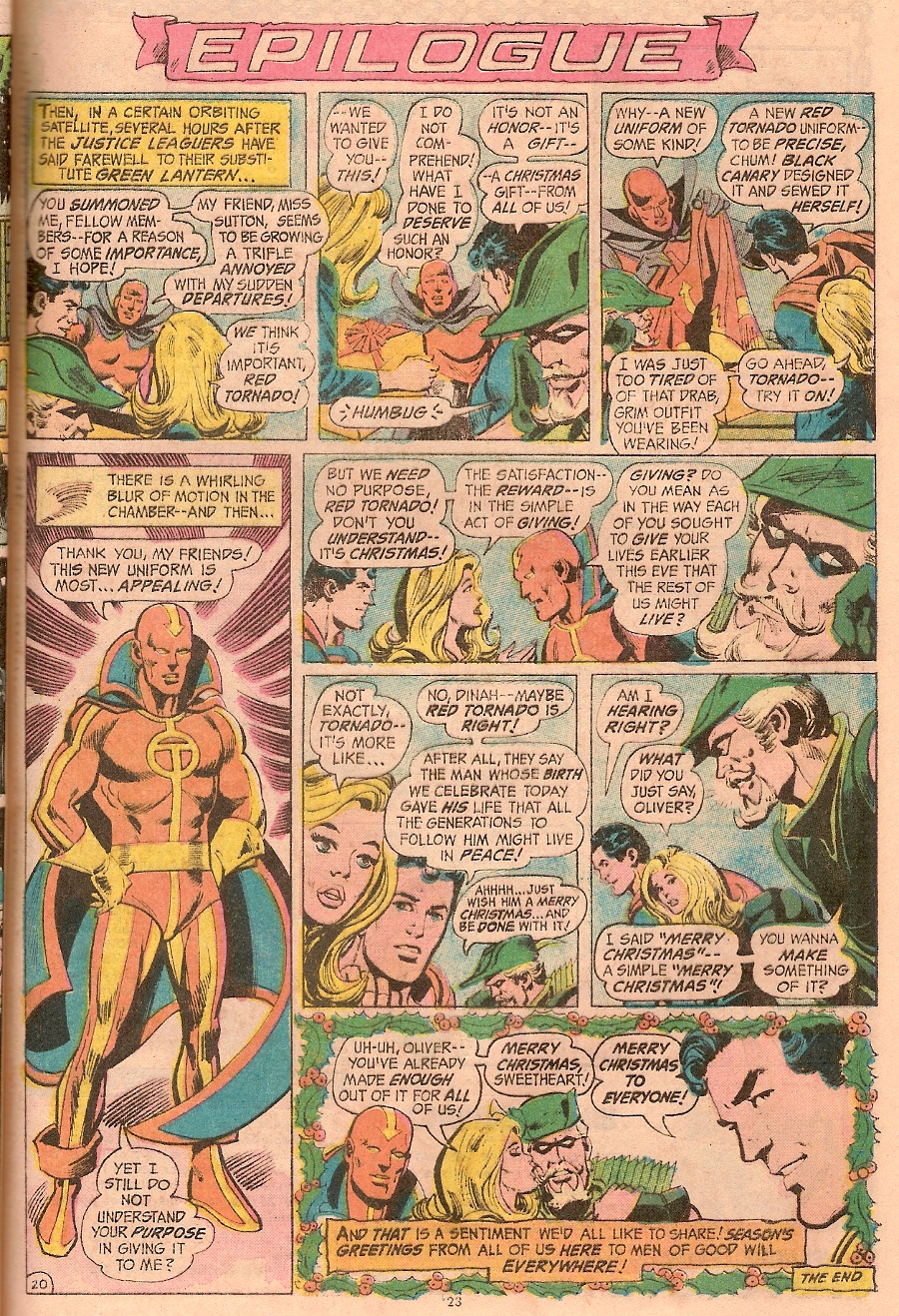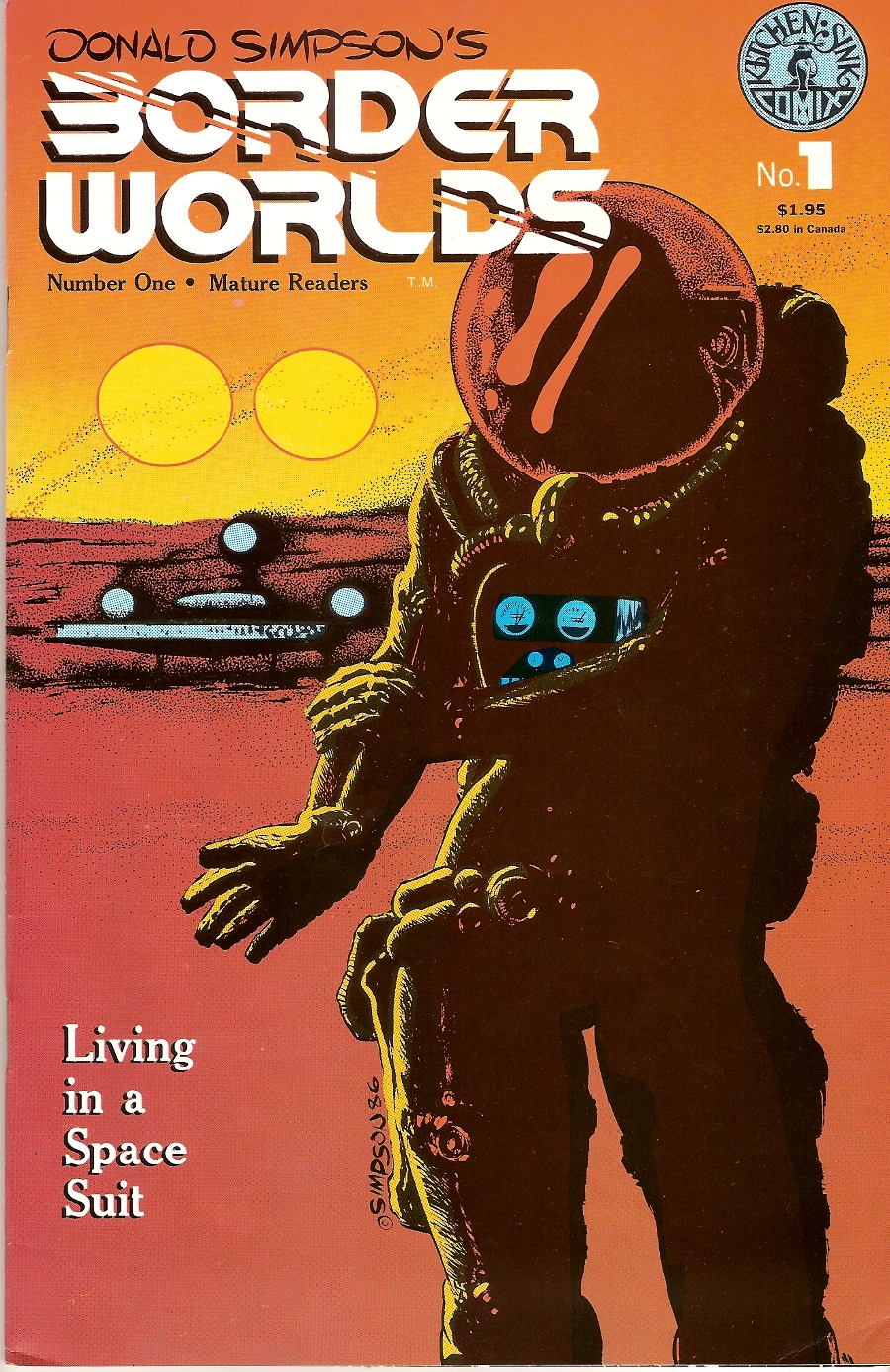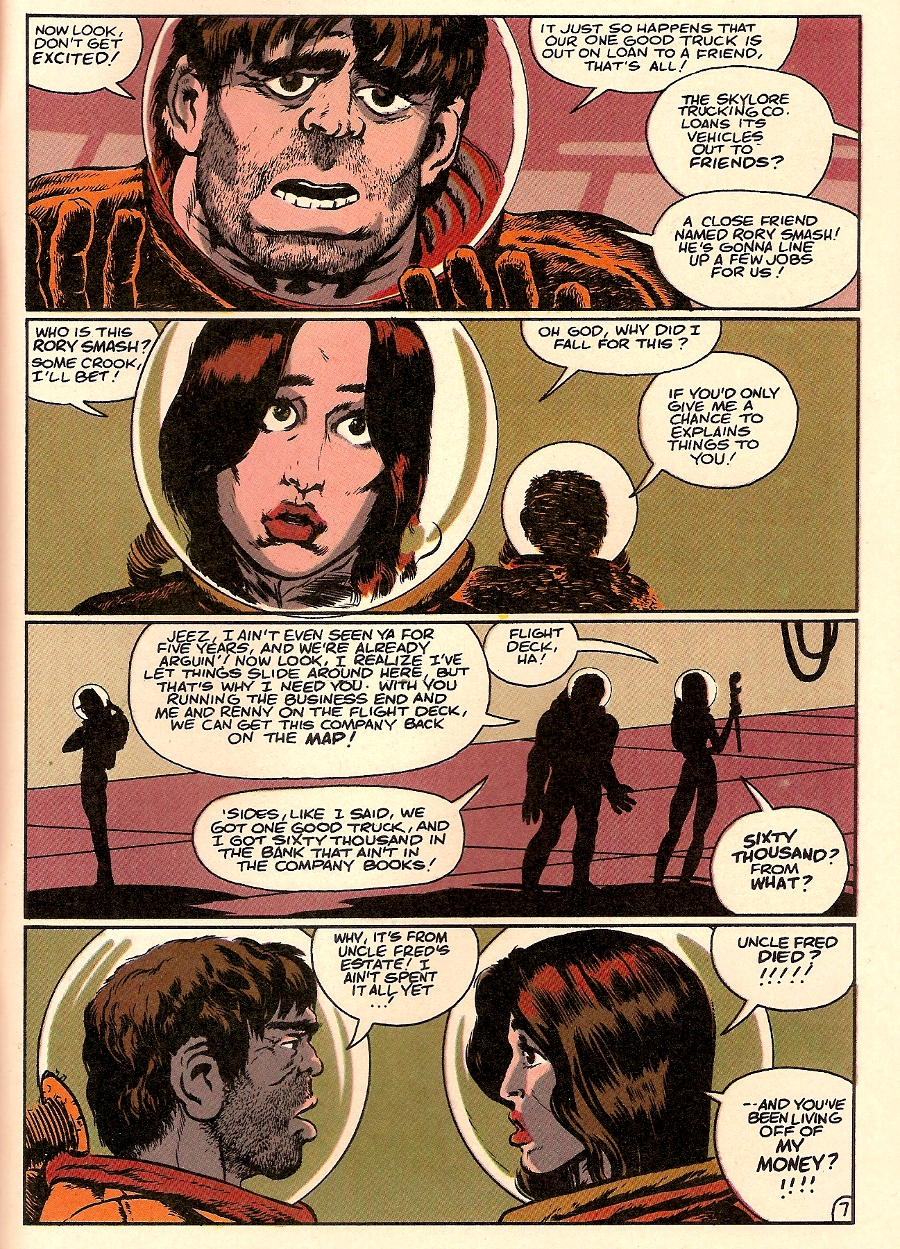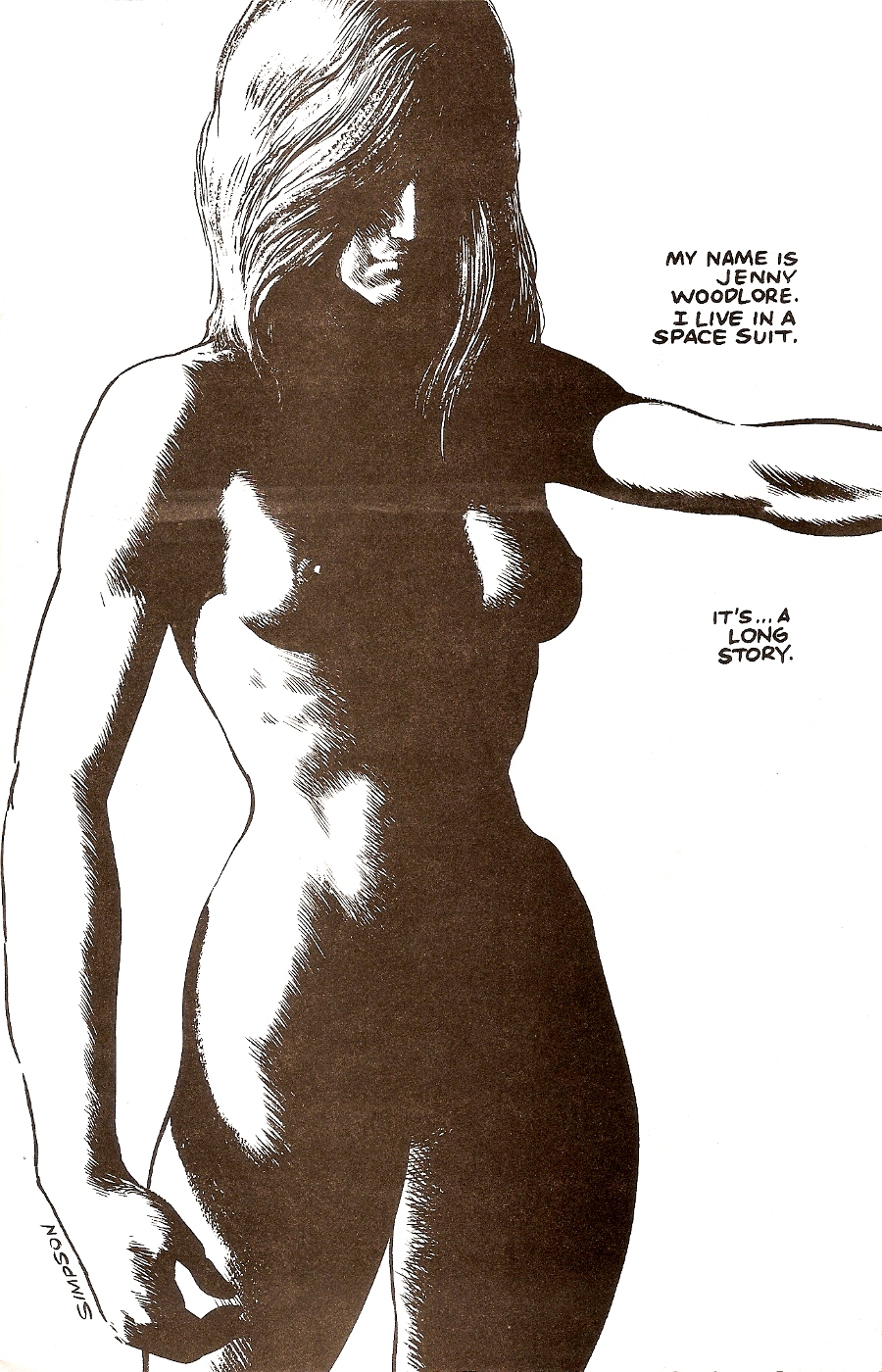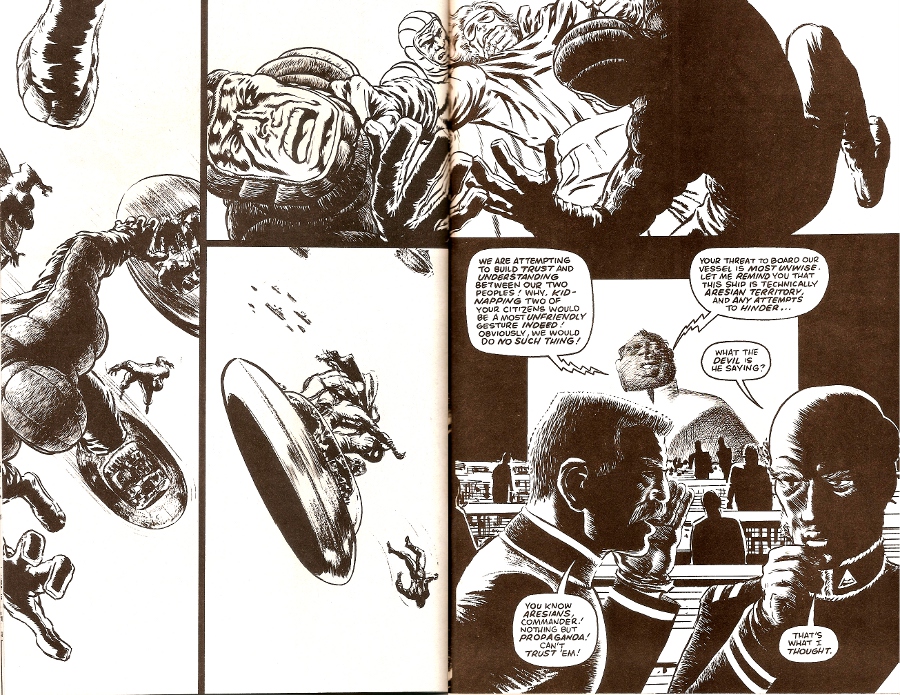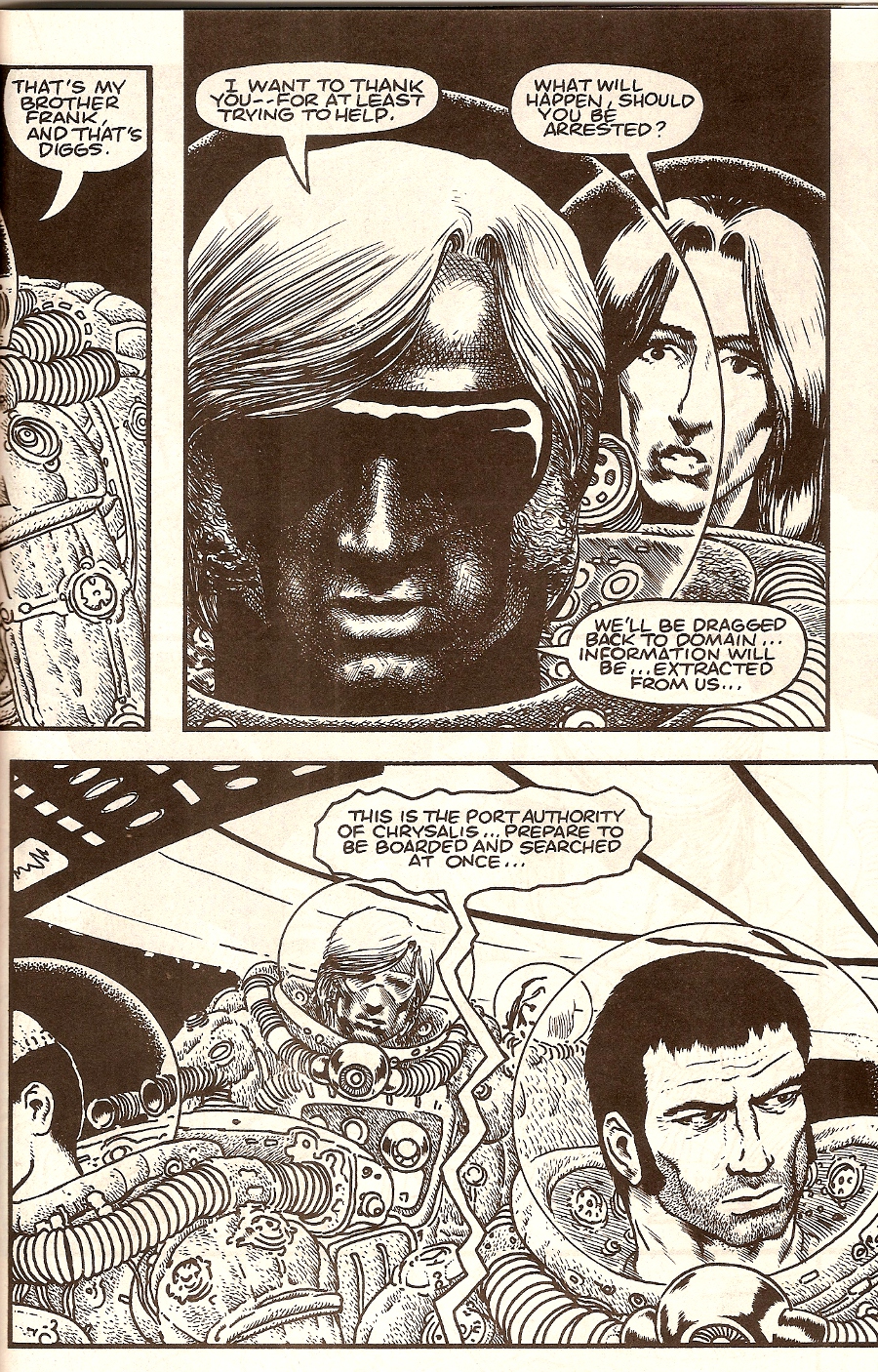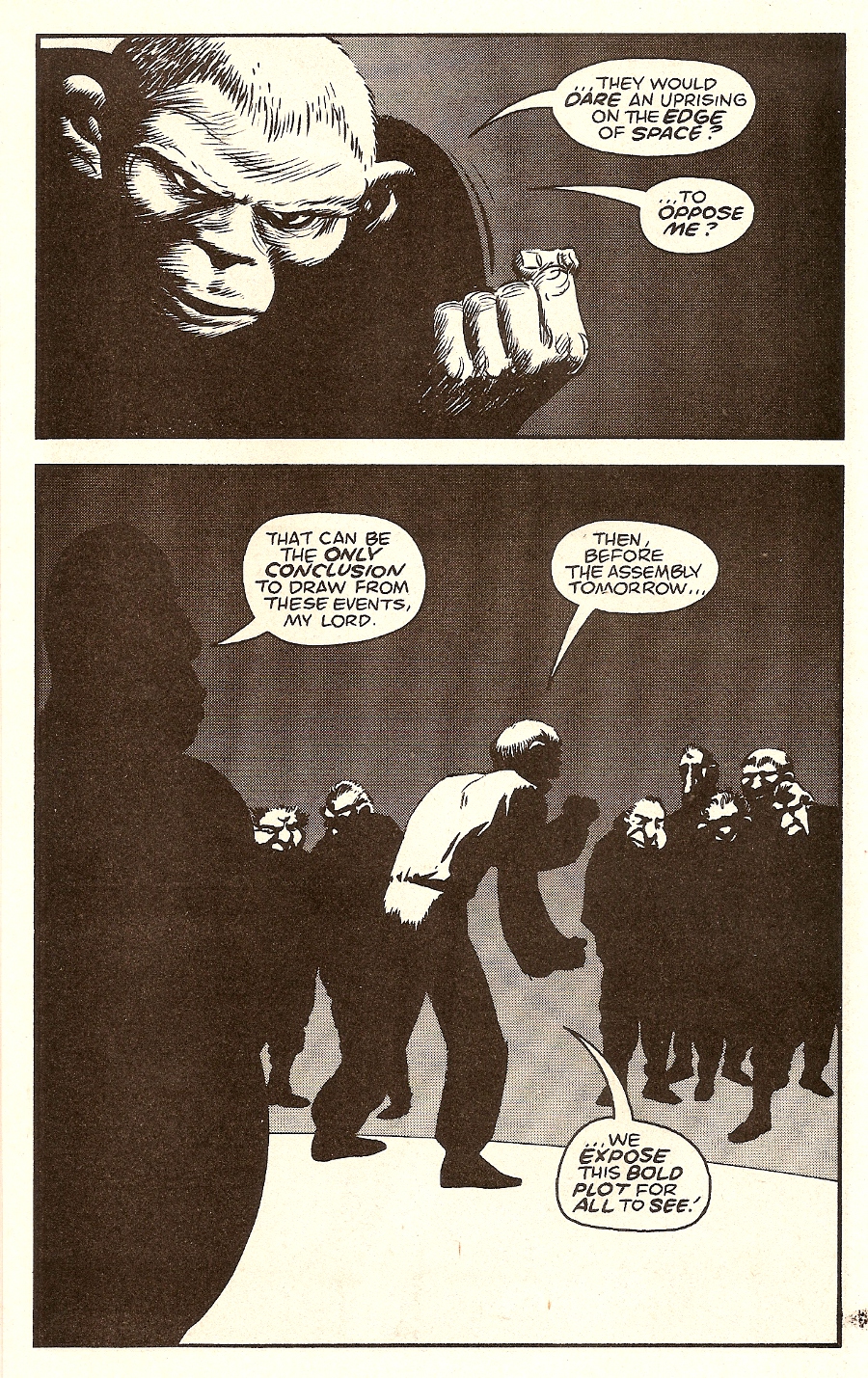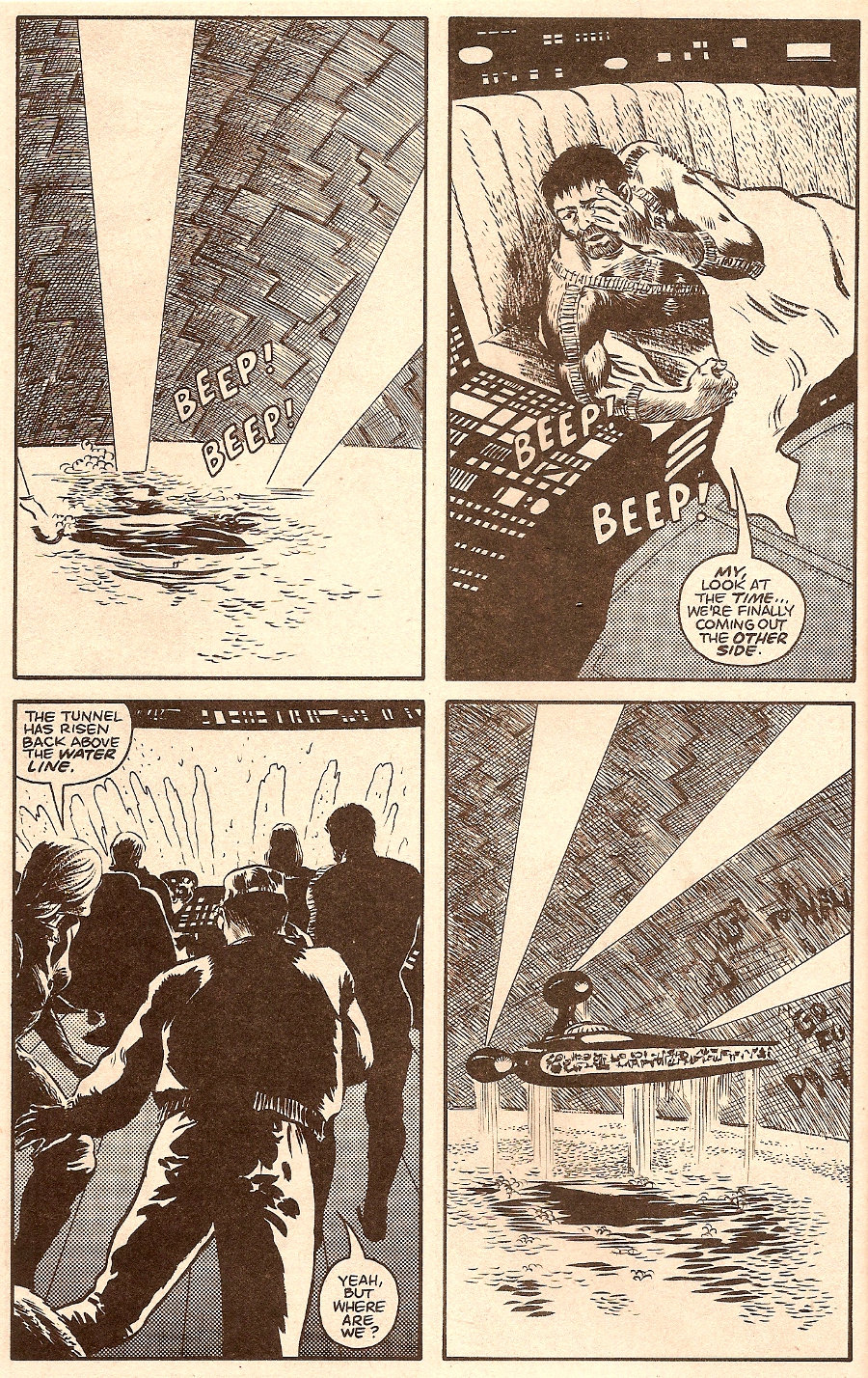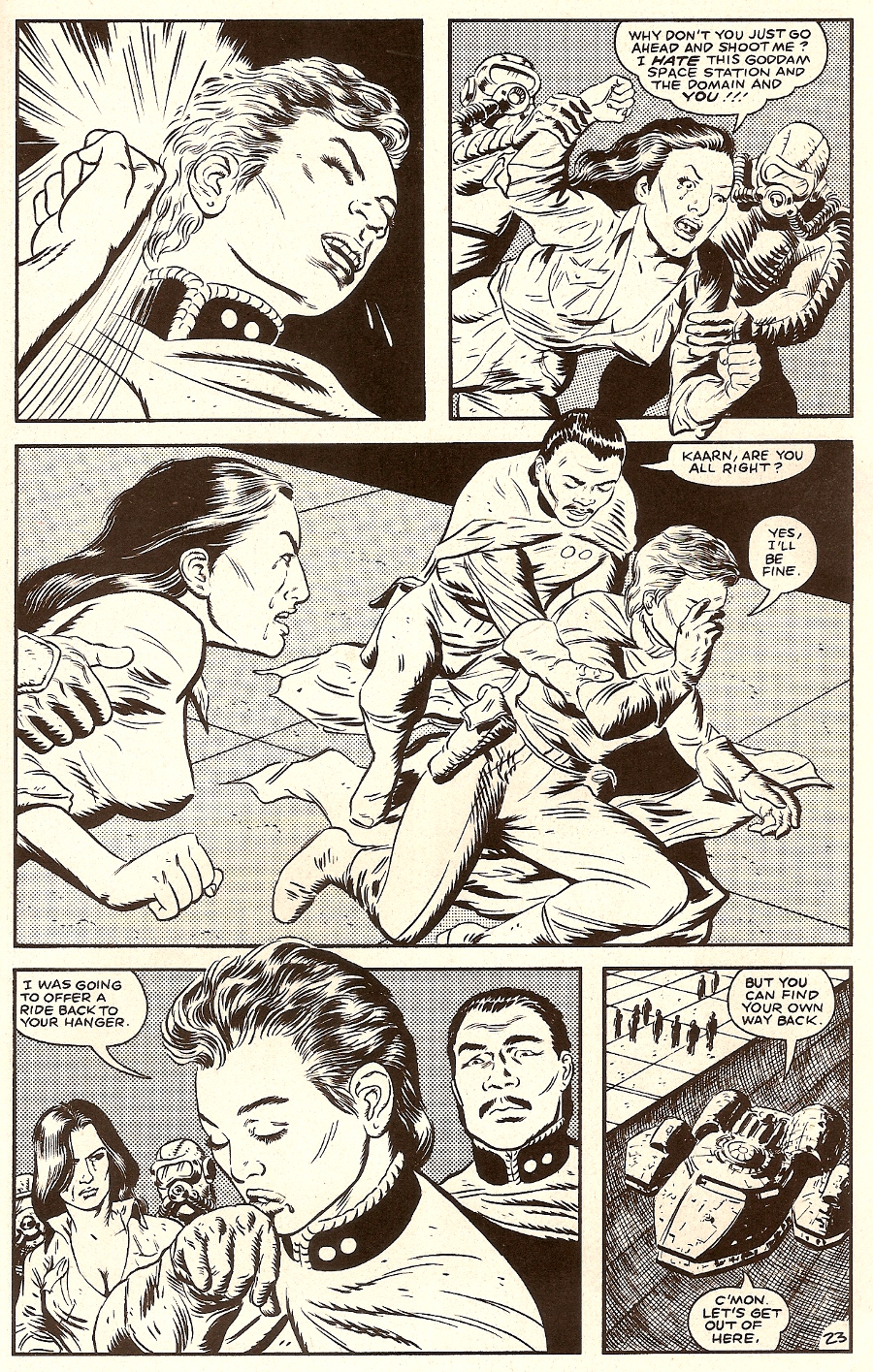
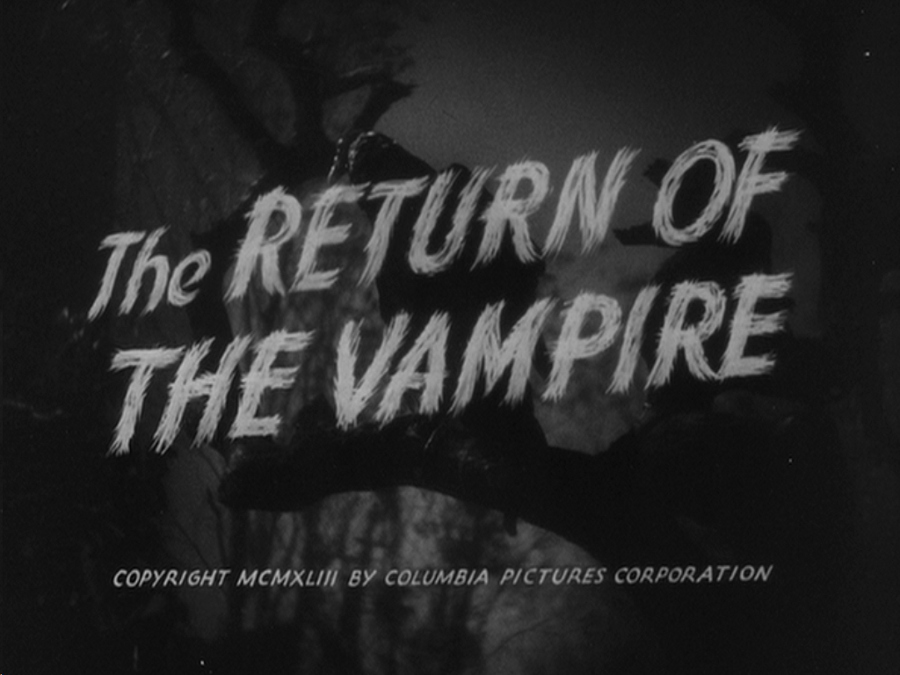
Once again, we continue with the lost treasures of my youth, this time with Columbia’s Return of the Vampire from 1943. I don’t know whether I’m getting nostalgic because I turned 50, or if I just didn’t get enough Halloween this year (weird, since at around October 15, I was feeling pretty tired of Halloween stuff), but here it is.
This is one of those movies.
People who came of age after 1980 or so won’t have nearly as many of these as kids of my generation, so here’s the deal. It’s 1969, and you’re flipping through the channels, wondering if anything good’s on–doesn’t take long, because there are only four channels–and you come upon this movie, and there’s a werewolf. Cool. And the werewolf is some sort of henchman to Bela Lugosi in a tux and cape, obviously Dracula. Except nobody calls him Dracula, and instead of Prof. Van Helsing, there’s this imperious British woman playing an organ who very calmly stands up to him and drives him away.
So you sit there mezmerized as the rest of the movie plays out, because you’ve seen all the Universal monsters, but now there’s this Dracula-that’s-not-Dracula that’s even cooler than those other movies, because there’s not only vampire and werewolf, but also bombs.
And it’s like there’s this whole other universe, maybe, of cool-ass monster movies you’ve never seen where the people aren’t cowering or fleeing, but fighting the monsters toe-to-toe, like Batman, and you want to see more, only you don’t even know what the name of this movie is, because you came in toward the end, and you can’t find the TV Guide. You have to wait until it shows again, only it never does. So it becomes this thing you tell your friends about over the years, this cool movie that you only got to see a part of, and you don’t know the title. You start to doubt that you’re even remembering it correctly, until one day, 30 years later, somebody finally knows the movie you’re talking about.
One of those.
The movie opens with a block of text over footage of a man in a cape menacing a frightened woman.

The sentence is incomplete, because the next thing you see on screen is the title, which completes the thought. It’s like the movie feels the need to blurb itself before it starts.
The story opens on a fog-shrouded cemetery in England in 1918 and doesn’t waste any time with mysterious omens or any of that clap-trap. Right up front, we see a man with his face covered in fur who enters a crypt. A coffin opens, and a man gets out, obviously a vampire. The wolfman is the vampire’s servant and spy; his name is Andreas, and he obviously likes his job.

So the vampire decides to head out and do his business, and even though we know who it is because of the one-sheet outside the theater (or the pic on the cover of the DVD box, if you will), the movie plays coy with his identity, only showing him from behind. He spreads his cape as if to transform into a bat, but only disappears into the fog.
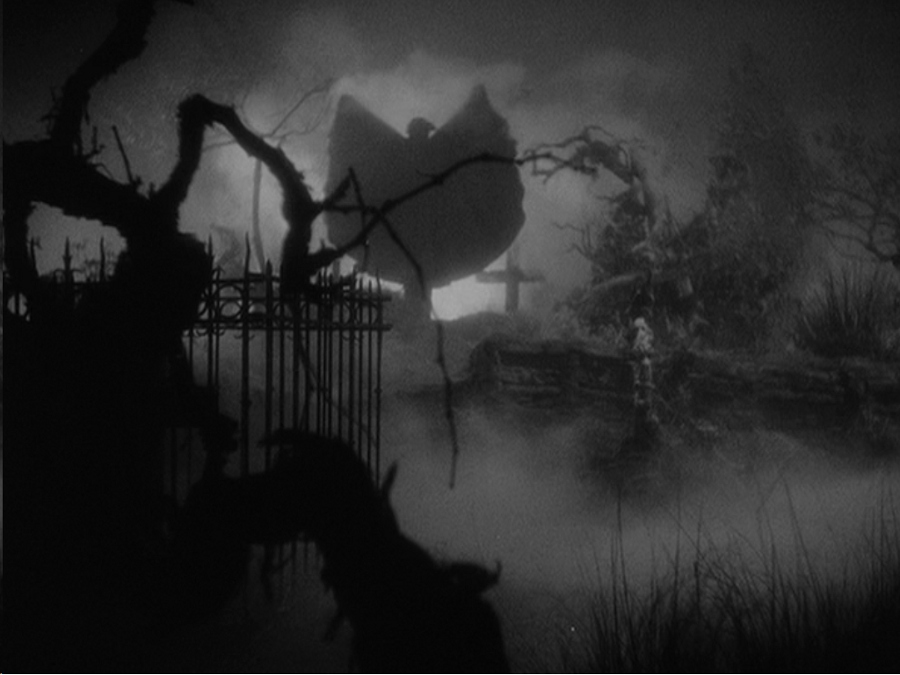
The one thing conspicuously missing from this vampire movie is any sign of a bat. Part of me wants to write that off to a low budget, but then I think of the bats in the Universal movies, those awful flopping puppets on wires, and I think that maybe they deliberately chose to forego the bats so as not to dilute the air of menace and mystery with obvious fakery.
Meanwhile, we track in on a mansion in a nicely executed miniature shot where we meet Dr. Jane Ainsley and her mentor, Professor Walter Saunders. Dr. Ainsley runs a small clinic where she has been presented with an unusual case: a woman with all the symptoms of anemia, but her blood is perfectly normal. Before they can get too far into the case, two kids burst into the lab: Ainsley’s son John and Saunders’s granddaughter Nicki.
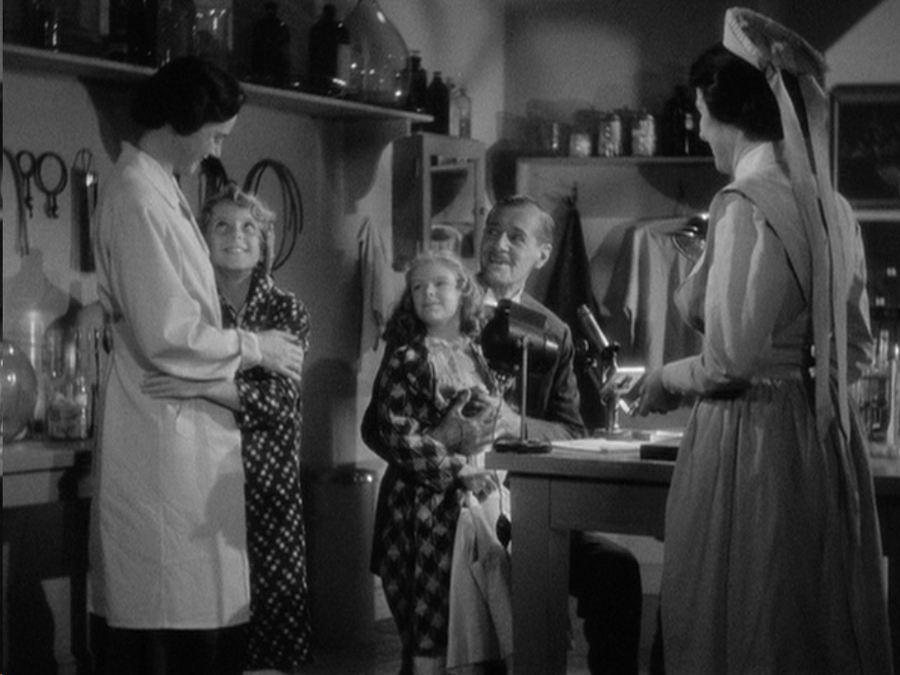
The two are obviously good friends. After the kids are sent to bed, Saunders and Ainsley visit the patient, who is babbling and sensitive to light.

Notice the way her eyes are dilated. Saunders mentions it in relation to her being under some kind of hypnosis, and the effect is suitably creepy. Also, on her neck you can barely make out the discreet fang marks. Like all of the 30’s vampire movies, there are never any fangs on display nor any blood, just the subtle tiny pinpricks on the neck.
The woman screams at someone no one else can see and dies. Saunders is disturbed and stays up all night doing research.
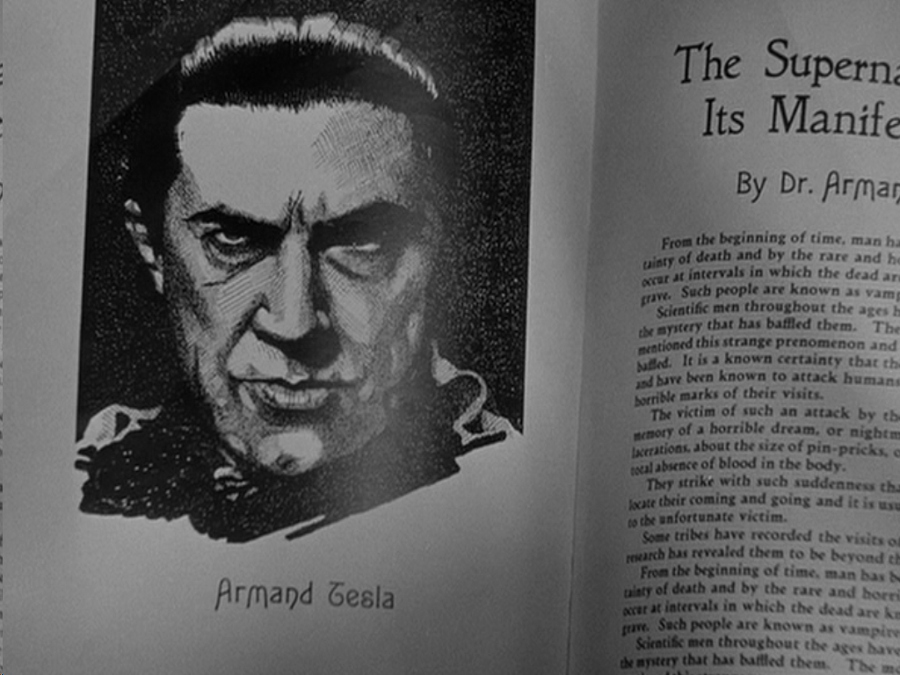
The illustration is obviously of Bela Lugosi, and the book is titled The Supernatural and Its Manifestations. The next day, Saunders tells Ainsley about the author Armand Tesla and, after examining the marks on the dead victim’s neck, declares that she was the victim of a vampire.
Ainsley scoffs at the idea, until they discover young Nicki unresponsive in her bed, with the same marks on her neck. Saunders gives Nicki an emergency transfusion, and then, following the instructions in Tesla’s book, they search the local cemeteries until they find the vampire’s coffin. To reassure Ainsley that they’re not about to commit simple murder, Saunders uses a mirror to show Ainsley the reflection.
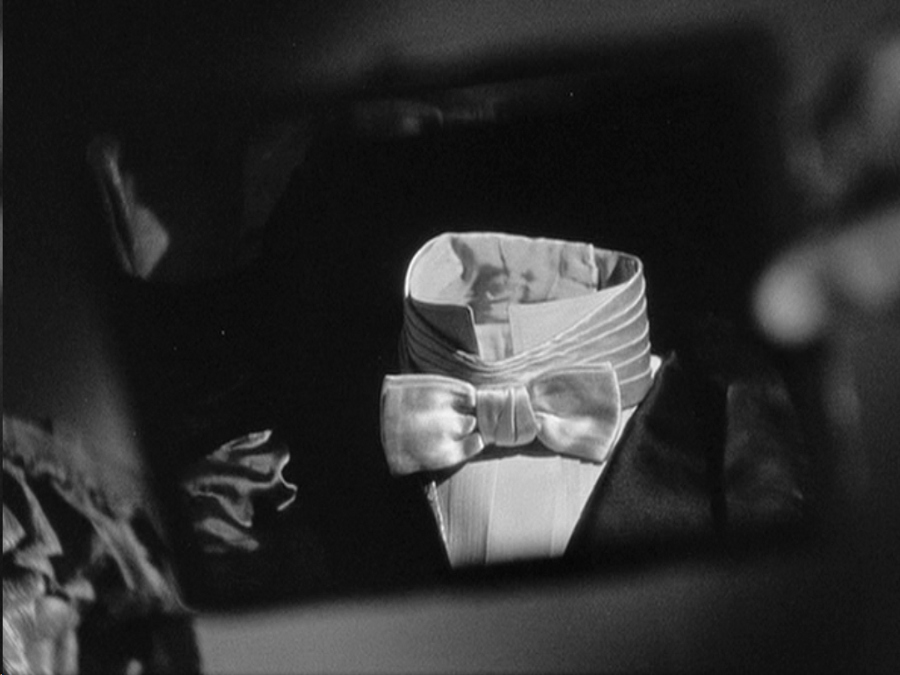
Simple, but effective. They drive an iron spike (it looks like a really big straight pin) through the vampire’s heart. Andreas appears and tries to stop them, but as the spike hits home, Andreas collapses and turns human, the vampire’s hold on him broken. Ainsley immediately takes pity on Andreas and demands that they help him.
22 years later, Sir Frederick Fleet of Scotland Yard closes a manuscript by Saunders describing the whole affair. Apparently, Saunders has recently died and the manuscript has been discovered among his belongings.
Fleet argues with an older Dr. Ainsley, now addressed as “Lady Jane,” that the story cannot possibly be true. Ainsley not only confirms it, but adds that the vampire they killed was none other than Armand Tesla himself, who had apparently been twisted by his own research or something. Fleet grimly states that if the incident actually happened, she may be an accessory to murder. He demands they exhume the body for examination. Lady Jane returns home, where she meets her son John and his fiancee, Nicki.

Lady Jane tells John privately about the events of 1918, which Nicki does not remember and which they have kept hidden from her. Lady Jane worries that Nicki may not handle it well if she learns the truth. They are interrupted by air raid sirens as Nazi planes make a bombing run.
Later, two comedy relief workmen enter the cemetery to rebury the bodies that have been unearthed by the bombing. They are startled to discover one with an iron spike through his chest.
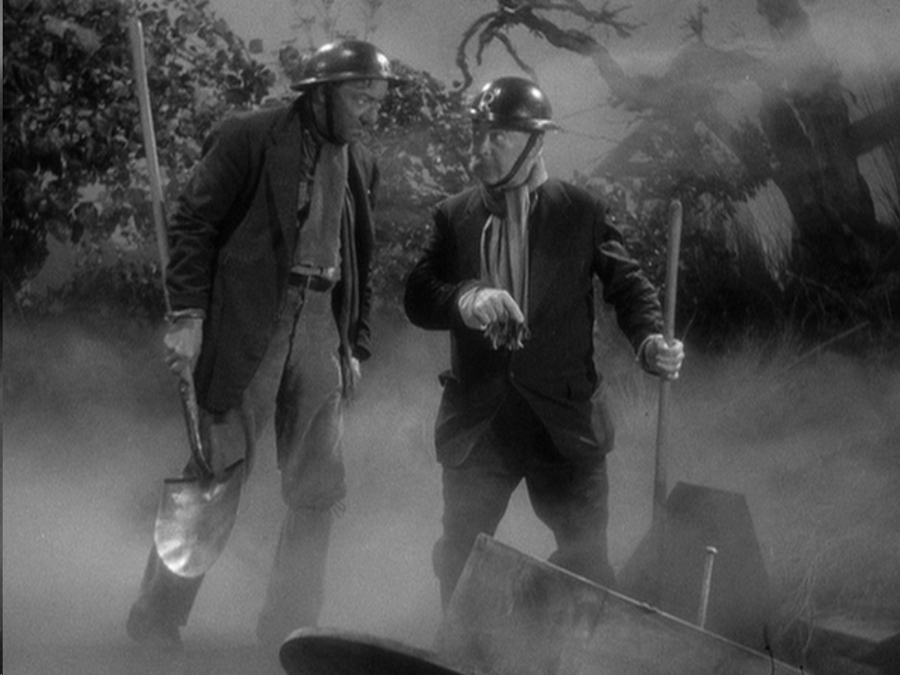
They figure the spike is shrapnel and pull it out so they can get the coffin closed (which makes you wonder how Ainsley and Saunders had closed the coffin when they buried him before). The body gasps as the spike is removed, so the workmen hurriedly close the casket and bury it.
But not apparently in its original spot. When Lady Jane and Sir Frederick arrive to exhume Tesla’s body, all they find is a crater. Sir Frederick decides to let the matter drop, since there’s no murder without a body.
Later that night, Lady Jane sends Andreas (who has recovered from the trauma of being a mind-controlled werewolf and since become her assistant in the clinic) off to meet up with a German scientist who has defected to England. Andreas is to meet the boat he’s secretly arriving on and give Dr. Hugo Bruckner his new identification papers.
However, on the way, Andreas hears a mysterious voice in the forest and is confronted by a face from his past, and the movie finally reveals the face of Armand Tesla (which is no revelation since we saw the illustration in the book earlier).
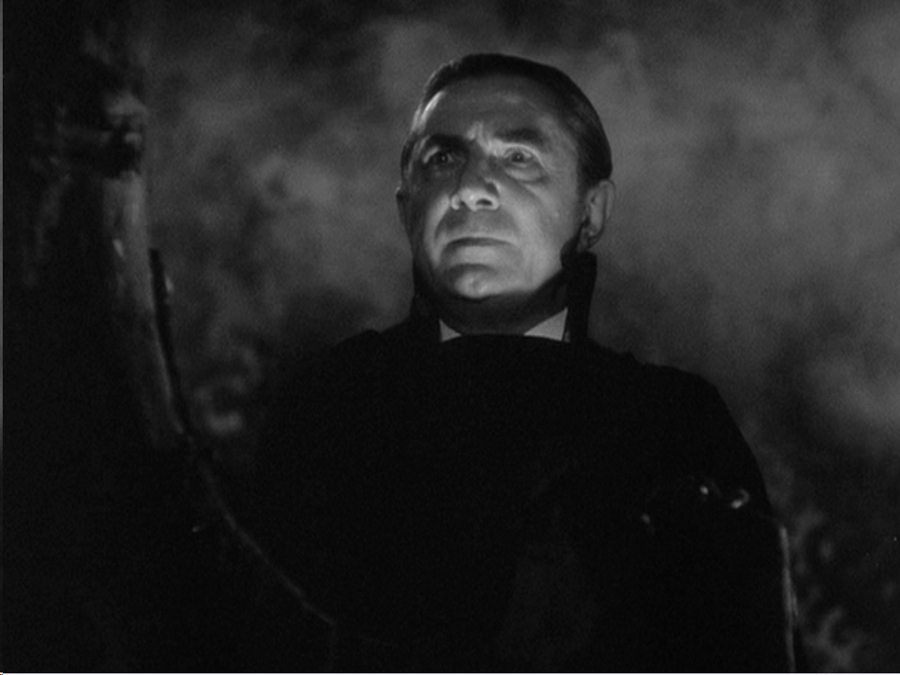
For a guy who has been buried with a stake in his heart, Tesla seems to know everything that’s been going on pretty well. He says, in fact, that he caused Saunders’s recent death through a curse, and will now take revenge on Lady Jane and her loved ones with Andreas’s help. Andreas is defiant, saying Tesla no longer has power over him, but Tesla overcomes his will, and Andreas transforms once more into his wolfman form.
And this is one fascinating thing about the film; it takes a very rationalistic approach to the supernatural. There’s nothing about vampirism being a curse spread from one vampire to another, or lycanthropy being a curse cast by magic gypsies. “Tesla’s morbid thirst for knowledge turned upon him” is all the explanation we get for how he became what he was. Andreas is turned by the force of Tesla’s will, and the victim’s state in the beginning was compared to hypnosis. It’s as if all the manifestations of the supernatural come down to the force of the human mind. More on this later.
Andreas kills Bruckner and his companion and gives his identification to Tesla. Tesla then shows up at a party Lady Jane is giving. When he meets grown-up Nicki, he gives her the heavy, heavy rape eyes as he kisses her hand, and she seems fascinated by him. Later on, we see her furtively looking across the room at him as he is holding forth on the powers of hypnosis. “Control the mind, and you control the body,” he says as she looks at him like she’s got a body in mind that he should be controlling.
Lady Jane gives “Bruckner” a tour of her lab, and though the lore about a vampire having to be invited in is never mentioned, she does say that he should assume he has free run of all the buildings on the grounds, which he accepts with a smile.
Later that night, Nicki is summoned from her bed by Tesla’s mental command. Nina Foch, who plays Nicki, looks really good in her nightgown, and apparently director Lew Landers agreed, because she’s going to spend pretty much the rest of the movie in it. You know what else Lew Landers apparently likes? Fog. Lots of it, even indoors, like Dr. Ainsley’s lab.
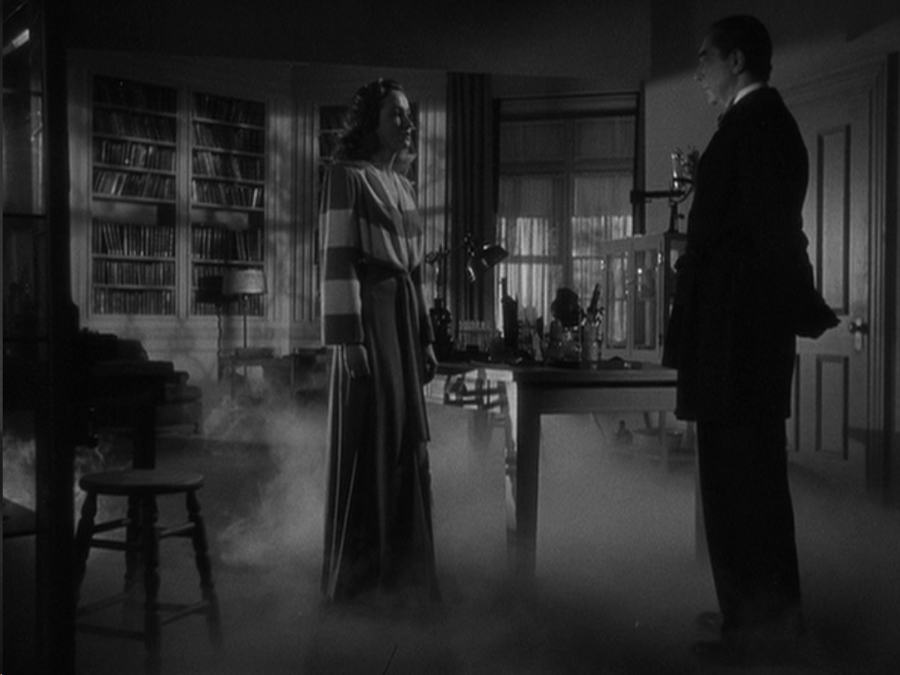
Apparently, Tesla just takes it with him wherever, like Pig-Pen from Peanuts. Tesla gloats that he will make Nicki his bride and take her back to Rumania with him to live forever, but first, “There are many things I will make you do for me.” I’ll bet there are.
The next morning, Nicki has been bitten. Lady Jane, having been to this rodeo before, immediately rolls up her sleeve for an emergency transfusion (blood type not being as much of a thing in the 40’s, I guess). She then tracks down the men who reburied Tesla’s body, and is not surprised when the spot they lead her to is an empty hole in the ground.
Back at the mansion, John is getting ready for his first concert (he’s a conductor for an orchestra) Â when Nicki enters his room looking sultry and hungry. She can’t stop staring at his throat, and as she moves in to kiss him (and possibly more) we see Tesla glaring in through the window. When Lady Jane discovers John unconscious with bite marks on his neck, she realizes things are getting personal.
Meanwhile, Sir Frederick has his suspicions about Andreas, and details a couple of men to follow him, and one of them is a familiar face.
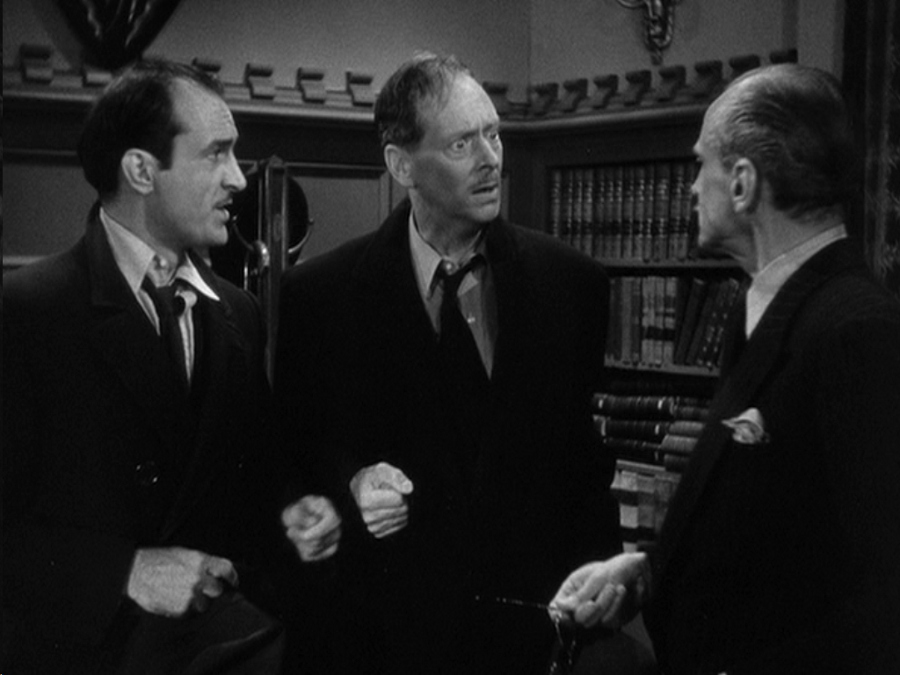
William Austin, who not only appeared as Alfred in the Columbia serial Batman, but also seems to have inspired Alfred’s modern look. In fact, this movie was released the same year as Batman.
The two men attempt to detain Andreas, but he wolfs out and gets away. But he drops a parcel containing laundry for Dr. Bruckner, who just so happens to also be on Sir Frederick’s radar. You see, Sir Frederick was given a description of Bruckner as a balding, heavyset man in his 60’s who walks with a limp, none of which apply to the current fellow posing as Bruckner.
So he and Lady Jane go to Bruckner’s rooms, where they discover the mirror turned to the wall. Lady Jane realizes that Bruckner is actually Tesla (although why she never recognized him as the man they staked is beyond me–it was dark, and it was 22 years ago, but you think you’d remember that). When Lady Jane and Sir Frederick confront Andreas, they discover his hand is covered with fur. He taunts them, then flees.
Lady Jane goes to Nicki’s bedside to comfort her. Nicki knows that John was hurt and fears that she did it, though she can’t remember. When she tries to get up and go to him, Lady Jane stops her. And full-on gropes her boob in the process.
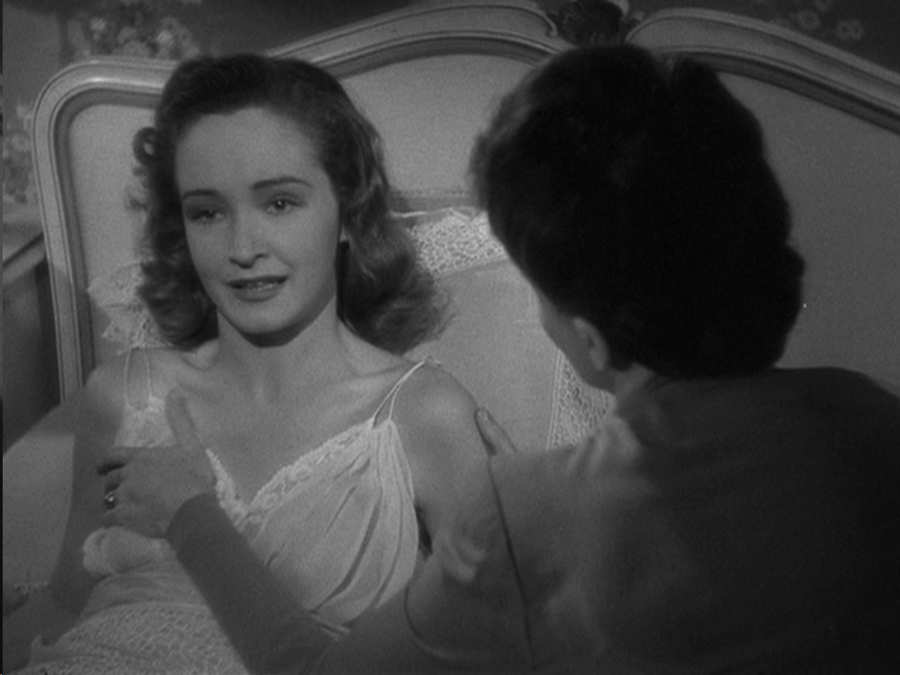
And it would be easy to dismiss this as a simple mistake, only instead of immediately moving her hand, Frieda Inescourt kind of walks her fingers up to a safe spot on Nina Foch’s shoulder, turning an accidental grope into a kind of caress. Not saying Frieda Inescourt was a lesbian, just saying Nina Foch was pretty hot in her own way, and it wouldn’t surprise me if everyone on set was feeling it. Also, credit Nina Foch with this: she never breaks character, even a little bit, which is why they were able to save time and money by foregoing a second take.
Lady Jane formulates a plan. She asks to borrow Nicki’s cross and orders the maid to leave Nicki alone in the room. When next we see the cross, it’s protecting John. So the plan involves keeping her son safe while leaving her son’s fiancee defenseless. Lady Jane can be kind of ruthless.
The next scene is the one that stuck in my memory all those years. Lady Jane sits calmly playing the organ, and Tesla appears beside her. He gloats that he will take away everything she loves–Andreas is under his thrall, and Nicki, and John. He will take Nicki away as his bride, but first, he will have her kill John.
Lady Jane replies that she knows he’s bluffing. Nicki didn’t bite John; Tesla did. And as for Andreas, Lady Jane says he still has good in his soul, “good that I have placed there” (she said modestly). Nicki and John and Andreas will be saved, because Tesla is evil, and evil must always lose to “faith and goodness.” And with that, she rips aside the sheet music to reveal a cross-shaped light that shines on Tesla.
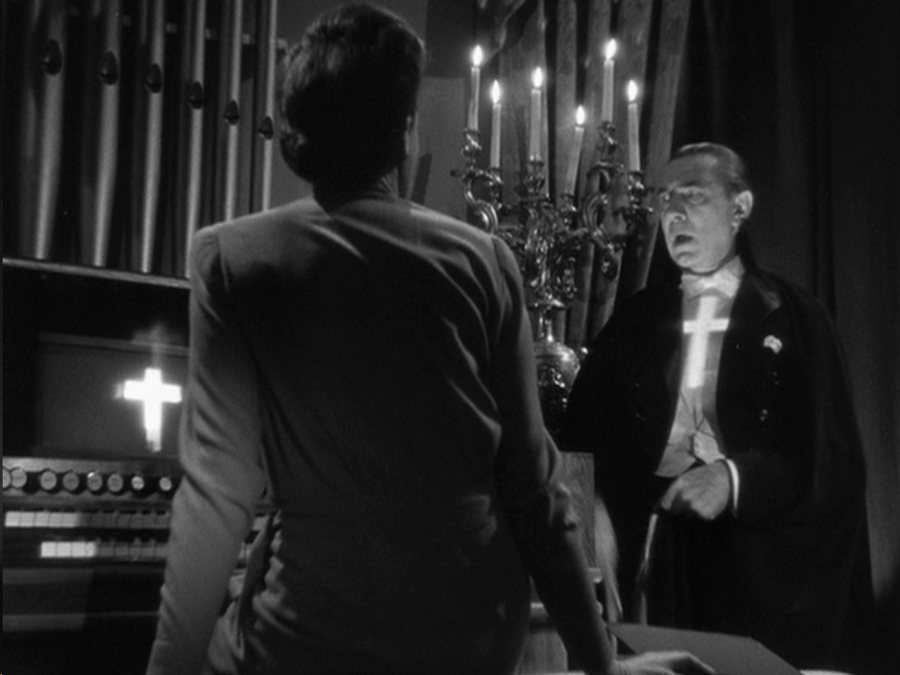
He stumbles away and vanishes in a puff of smoke. Damn, Lady Jane turned her organ into a vampire-killing machine!
But once again, there is an oddly rationalistic tone to the confrontation. Despite the Christian iconography, there is never any reference to God or a higher power in reference to the battle between Good(ness) and Evil. Goodness comes not from God, but from the human heart, and Lady Jane has made Andreas good through the force of her own caring. In a movie with Christian overtones, her prideful statement that she had placed good in Andreas’s heart would be hubris. In this movie, it’s simple fact.
Once Tesla vanishes, Lady Jane slumps and almost faints, which in any other movie might make you roll your eyes and say, “Oh yeah, the woman has to swoon.” But remember, Tesla dominates people through the force of his will, so that even though the conversation may have seemed calm, another battle was going on under the surface. At least, that’s my interpretation.
Sir Frederick arrives just in time to see Tesla disappear. He argues that he’s done with Lady Jane’s delays. He is going to take action. As they talk, Nicki comes down the stairs, answering Tesla’s mental summons. Sir Frederick wants to stop her, but Lady Jane forbids it. Nicki must lead them to Tesla’s coffin so he can be killed once and for all. “My way or none at all,” she says to the head of Scotland Yard, and he backs right down and follows her lead. This woman is made of iron.
They follow Nicki to the old Priory Cemetery, where they encounter Tesla and Andreas just as the air raid sirens are sounding. Sir Frederick shoots Andreas, but Lady Jane tells him not to shoot again. Before anything else can happen, a Nazi bomb hits nearby, sending Sir Frederick and Lady Jane to cover. The wounded Andreas picks up an unconscious Nicki and takes her to the abandoned church basement that is Tesla’s new home.
Andreas begs Tesla to heal his wound, but Tesla coldly tells him he is no longer needed and orders him into the corner to die. As Tesla is preparing a coffin for Nicki by scattering dirt in it (the vampire must sleep on his or her “native soil”), Andreas discovers a crucifix in the dirt. He stares at it, and Tesla’s domination is broken. Andreas becomes human again.
He uses the cross to drive Tesla away from Nicki and onto the stairs as another bomb hits. When Andreas comes to, Tesla is still unconscious, and daylight is visible above. Andreas drags Tesla up the stairs and into the daylight. He grabs an iron spike and a brick. Tesla, weakened by the sunlight, cannot resist. Andreas kills Tesla with the spike before succumbing to his gunshot wound.
Nicki watches in horror as Tesla’s face begins to melt.
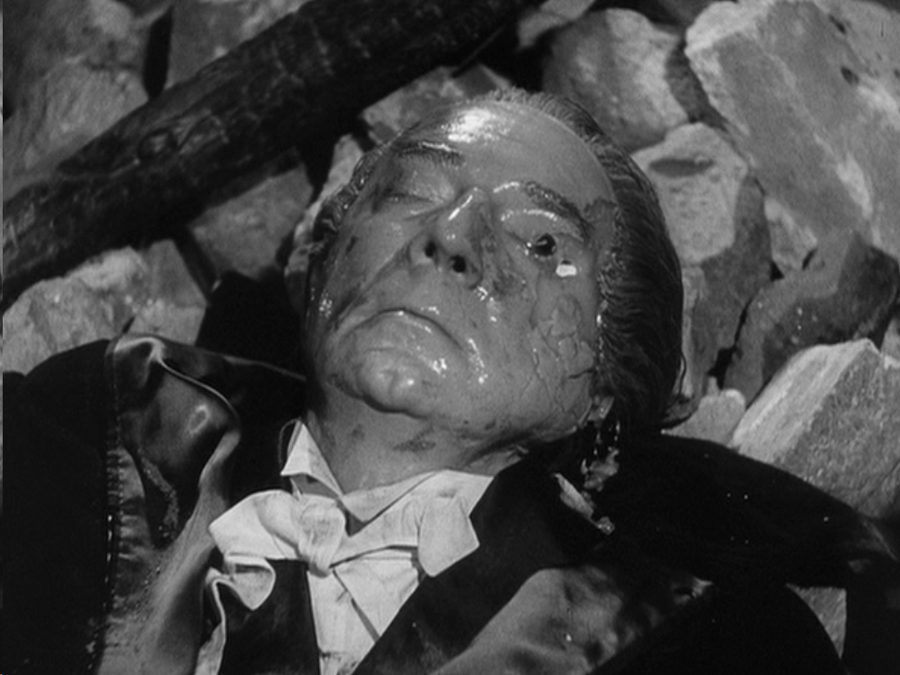
When Lady Jane and Sir Frederick arrive, they find emergency personnel and Nicki on a stretcher. Lady Jane rushes to her, and it pretty much happens again.

Nina Foch projected a kind of cold image on screen, but Frieda couldn’t seem to get enough of her. Meanwhile, Sir Frederick discovers all that is left of Armand Tesla (and Bela Lugosi’s career).

Lugosi’s biggest role after this would be reprising his role as Dracula opposite Bud Abbott and Lou Costello. Otherwise, it would be a long slide into drug addiction and Ed Wood’s circle of oddballs.
When I found the DVD of this, I watched it with some trepidation. So many times, the things we loved as a kid don’t age well. But I still actually like this. It’s obviously a rip-off of the Universal films–Lugosi is just playing Dracula with the serial numbers filed off, and the scene with the dying victim is apparently taken almost word-for-word from Dracula’s Daughter–but it has such a different flavor, with the modern setting and rationalistic approach toward the supernatural. The talking werewolf is cool, people fighting back instead of cowering is cool, the skeptic  and the believer teaming up to fight the evil is cool. It’s like watching a 1940’s episode of X-Files. Only, you know, without the black cancer oil.

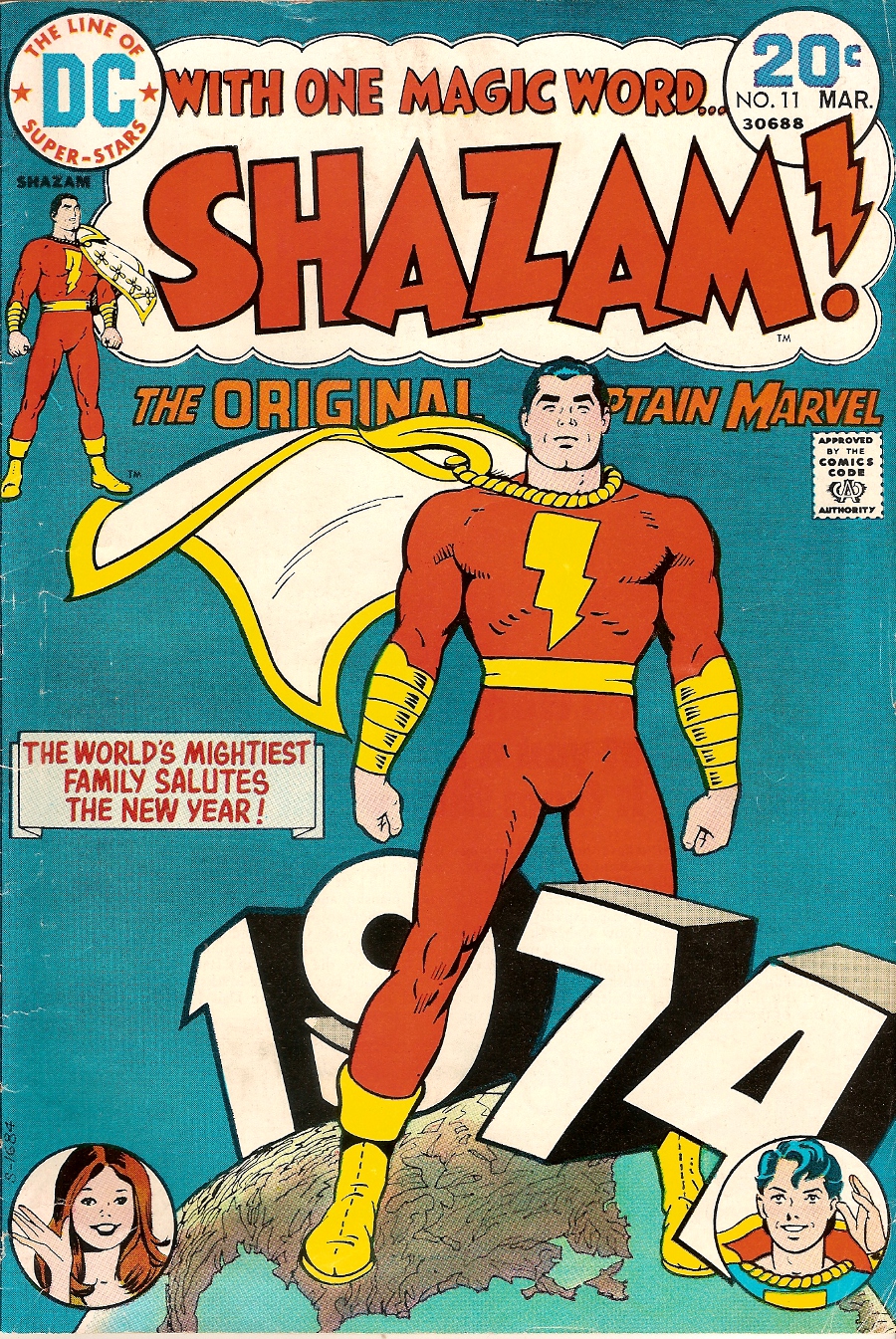 Last week, I talked about Werner Roth, a guy I’d always thought of as the most boring artist ever. Turned out, when looking back, that I realized he wasn’t bad when he was working within his genre. He’d just never been much of a superhero guy, and unfortunately, when I discovered him, superheroes were where the money was.
Last week, I talked about Werner Roth, a guy I’d always thought of as the most boring artist ever. Turned out, when looking back, that I realized he wasn’t bad when he was working within his genre. He’d just never been much of a superhero guy, and unfortunately, when I discovered him, superheroes were where the money was.
